NBER WORKING PAPER SERIES
ALGORITHMIC WRITING ASSISTANCE ON
JOBSEEKERS’ RESUMES INCREASES HIRES
Emma Wiles
Zanele T. Munyikwa
John J. Horton
Working Paper 30886
http://www.nber.org/papers/w30886
NATIONAL BUREAU OF ECONOMIC RESEARCH
1050 Massachusetts Avenue
Cambridge, MA 02138
January 2023, Revised October 2023
John Horton and Emma van Inwegen consult for the marketplace which was the empirical
context for this research. The views expressed herein are those of the authors and do not
necessarily reflect the views of the National Bureau of Economic Research.
NBER working papers are circulated for discussion and comment purposes. They have not been
peer-reviewed or been subject to the review by the NBER Board of Directors that accompanies
official NBER publications.
© 2023 by Emma Wiles, Zanele T. Munyikwa, and John J. Horton. All rights reserved. Short
sections of text, not to exceed two paragraphs, may be quoted without explicit permission
provided that full credit, including © notice, is given to the source.

Algorithmic Writing Assistance on Jobseekers’ Resumes Increases Hires
Emma Wiles, Zanele T. Munyikwa, and John J. Horton
NBER Working Paper No. 30886
January 2023, Revised October 2023
JEL No. M5,J0,J64
ABSTRACT
There is a strong association between writing quality in resumes for new labor market entrants
and whether they are ultimately hired. We show this relationship is, at least partially, causal: in a
field experiment in an online labor market with nearly half a million jobseekers, treated
jobseekers received algorithmic writing assistance on their resumes. Treated jobseekers were
hired 8% more often. Contrary to concerns that the assistance takes away a valuable signal, we
find no evidence that employers were less satisfied. We present a model where better writing
does not signal ability but helps employers ascertain ability, rationalizing our findings.
Emma Wiles
Massachusetts Institute of Technology
Sloan School of Management
100 Main St
Cambridge, MA 02142
Zanele T. Munyikwa
Massachusetts Institute of Technology
Sloan School of Management
100 Main St
Cambridge, MA 02142
United States
John J. Horton
Massachusetts Institute of Technology
Sloan School of Management
100 Main St
Cambridge, MA 02142
and NBER

Algorithmic Writing Assistance on Jobseekers’
Resumes Increases Hires
Emma Wiles
*
MIT
Zanele Munyikwa
†
MIT
John J. Horton
‡
MIT & NBER
September 25, 2023
Abstract
There is a strong association between writing quality in resumes for new labor market
entrants and whether they are ultimately hired. We show this relationship is, at least
partially, causal: in a field experiment in an online labor market with nearly half a
million jobseekers, treated jobseekers received algorithmic writing assistance on their
resumes. Treated jobseekers were hired 8% more often. Contrary to concerns that the
assistance takes away a valuable signal, we find no evidence that employers were less
satisfied. We present a model where better writing does not signal ability but helps
employers ascertain ability, rationalizing our findings.
1 Introduction
For most employers, the first exposure to a job candidate is typically a written resume. The
resume contains information about the applicant—education, skills, past employment, and
so on—that the employer uses to draw inferences about the applicant’s suitability for the
job. A well-written resume might influence an employer’s perception of a candidate. One
perspective is that a better-written resume—without any change in the underlying facts—
might make it easier for the employer to draw the correct inferences about a candidate’s
abilities, potentially improving the chance of an interview or job offer. We call this the “clar-
ity view” of the role of resume writing quality. From another perspective, a resume might
not merely be a conduit for match-relevant information; the resume’s writing itself could
signal ability. In particular, writing quality might provide signals about the jobseeker’s
communication skills, attention to detail, or overall quality, potentially leading to a greater
*
Corresponding author: [email protected]
†
‡
1
chance of a positive outcome. We call this the “signaling view” of the role of resume writing
quality.
In this paper, we explore the mechanics of how resume writing quality affects the hir-
ing process. First, using observational data from a large online labor market, we document
a strong positive relationship between writing quality in resumes and hiring that persists
even after controlling for obvious confounders. Second, we report the results of a field exper-
iment in which we exogenously vary writing quality in the same market. This experiment
directly tests whether there is a causal effect of writing quality on job market outcomes and
provides a testing ground to distinguish between the clarity and signaling views.
Our main substantive finding is evidence for the “clarity view.” Evidence for this con-
clusion is possible because we trace the whole matching process from resume creation all
the way to a measure of post-employment satisfaction with a sample of 480,948 jobseekers.
This sample size is an order of magnitude larger than the next largest experiments.
Treated jobseekers were more likely to get hired (consistent with both signaling and
clarity explanations), but we find no evidence that employers were later disappointed in the
quality of work by the treated group, which refutes what the “signaling view” explanation
would predict.
To create random variation in writing quality, we intercept new jobseekers at the resume-
writing stage of registering for the online labor market. We randomly offer some of them—
the treatment group—algorithmic writing assistance, while others—the control group—
write their resume under the status quo experience of no assistance. We will discuss this
assistance in depth, which we refer to as the Algorithmic Writing Service, but, at a high
level, it improves writing by identifying and providing suggestions to resolve common er-
rors. After resume creation, we observe both treated and control jobseekers as they engage
in search and, in the case of completed jobs, receive reviews.
In the experimental data, there are quantifiable improvements to resume-writing qual-
ity among the treatment group. For example, we find fewer grammar errors, redundancies,
and commonly confused words in the resumes of the treated group of jobseekers. These pos-
itive effects to writing were greatest at the low-end of the distribution in writing quality, as
jobseekers with already excellent resumes benefited little from writing assistance.
One might worry that the treatment could affect behavior. However, we find that, during
job search, treated workers did not send out more applications than workers in the control
group, nor did they propose higher wage bids. This is a convenient result, as it allows us
to focus on the decision-making of the employers. If jobseekers had altered their applica-
tion behavior—perhaps sending more applications with their stronger resumes—we might
wrongly attribute greater job-market success to the resume rather than this endogenous
2
change in effort.
As for the effect of writing assistance on hiring, we find that treated jobseekers had a 8%
increase in their probability of being hired within their first month on the platform relative
to the control group. If hired, treated workers’ hourly wages were 10% higher than the
hourly wages of workers in the control group. This result is downstream of hiring and we
provide evidence that it is due to changes in the composition of which workers were hired.
The data make the impact of resume quality on hiring decisions apparent. In order to
differentiate between the “signaling view” and “clarity view,” we look at the effect of the
treatment on a few different proxy’s for employers’ satisfaction with the quality of work.
We do not find any significant treatment effects to revealed preference measures like hours
worked or whether or not workers were ever rehired.
Unique to our setting, we also have explicit measures of employer disappointment, as
both sides privately rate each other at the conclusion of the contract. Employer ratings
provide a direct way to analyze the informational role of the resume. Specifically, since the
treatment removes or at least weakens a credible signal of jobseeker ability, the “signaling
view” would suggest that hiring decisions made without this signal should leave employers
disappointed. We find no statistically or economically significant treatment effects for any
of these ratings. Given the 10% higher average wages in the treatment group, if employers
were simply tricked into hiring worse workers generally, these higher wages should have
made it even more likely to find a negative effect on ratings (Luca and Reshef, 2021). More-
over, we find that workers are hired for at least as many hours of labor, and are just as likely
to be rehired.
One possible explanation for our results is that employers are simply wrong to consider
resume writing quality as informative about ability. However, the “clarity view” can also
rationalize our results without making this assumption. It is helpful to formalize this notion
to contrast it with the more typical signaling framing of costly effort and hiring. To that
end, we present a simple model where jobseekers have heterogeneous private information
about their productivity but can reveal their type via writing a “good” resume. This is not
a signaling model where more productive workers face lower resume-writing costs—any
worker, by writing a good resume, will reveal their information. This cost is assumed to
be independent of actual productivity. We show that writing assistance shifting the cost
distribution can generate our findings of more hires, higher wages, and equally satisfied
employers.
We perform this study in the context of a large literature on how experimentally varying
applicant attributes affects callback rates (Moss-Racusin et al., 2012; Bertrand and Mul-
lainathan, 2004; Kang et al., 2016; Farber et al., 2016). More specifically, we contribute by
3

showing the importance of text in understanding matching (Marinescu and Wolthoff, 2020).
The notion that better writing can help a reader make a better purchase decision is well-
supported in the product reviews literature (Ghose and Ipeirotis, 2010) but is a relatively
novel finding in labor markets.
While we are not the first to investigate how writing matters to employers
1
(Sterkens
et al., 2021; Martin-Lacroux and Lacroux, 2017), we believe we are the first to do so in a
field experiment with natural variation in writing quality. In one related example, Sajjadi-
ani et al. (2019) analyze resumes of applicants to public school teaching jobs and find that
spelling accuracy is correlated with a higher probability of being hired. Hong, Peng, Burtch
and Huang (2021) further show that workers who directly message prospective employers
(politely) are more likely to get hired, but the politeness effect is muted when the workers’
messages contain typographic errors. Weiss et al. (2022) conducts a lab experiment and
finds that the use of AI in jobseekers’ writing resulted in employer perceptions of lower com-
petence, warmth and social desirability (however, of particular importance is that in their
experiment, the use of AI was disclosed to employers).
These results come at a key time for the evolution of hiring decisions—the practical im-
plications of these two views can inform employers who need to adapt their hiring practices
to a world in which AI can provide substantial quality improvements to application materi-
als. AI capable of generating text is already leaving its mark on labor markets (Eloundou et
al., 2023; Felten et al., 2023), and understanding the role of individuals’ writing abilities in
predicting their quality is becoming increasingly crucial. Recent research has demonstrated
that Large Language Models like ChatGPT can significantly improve worker productivity,
particularly by raising bottom of the skill distribution (Noy and Zhang, 2023; Brynjolfsson
et al., 2023). Similar findings have been reported in other studies on technological advance-
ments, such as the benefit that surgical robots provide to the least proficient surgeons (Tafti,
2022). Our own findings are consistent with these results, as we observed the greatest ef-
fects of our treatment among individuals with lower writing quality.
These results can only describe a partial equilibrium. Our study cannot speak to crowd-
out effects (Crépon et al., 2013; Marinescu, 2017), which are relevant to discuss the welfare
implications of any labor market intervention. However, our purpose is understanding how
employers make decisions with respect to resumes and their role as a tool for lessening
information frictions. Additionally, given that in our setting, new entrants compete with
established jobseekers on the platform, we anticipate the crowd-out effect will be small, and
perhaps even welcome if at the expense of more established workers, given the obstacles
1
While the reason this preference exists is not known, recruiters report, anecdotally, caring about a re-
sume’s writing quality (Oreopoulos, 2011).
4

new entrants face (Pallais, 2014).
If the “clarity view” is more important to future hiring decisions, then any intervention
that encourages better writing is likely to be beneficial for all parties. There will likely be
little loss in efficiency if parties are better informed. Even better, as we show, this kind of
assistance can be delivered algorithmically. These interventions are of particular interest
because they have zero marginal cost (Belot et al., 2018; Briscese et al., 2022; Horton, 2017),
making a positive return on investment more likely, a consideration often ignored in the
literature (Card et al., 2010). On the other hand, if the “signaling view” is more important,
then providing such writing assistance will mask important information and lead to poor
hiring decisions, particularly if writing skills can be conceived of as social skills.
2
As for
the treatment itself, unlike general advice, algorithmic interventions are adaptive. In our
study, the algorithm took what the jobseeker was trying to write as input and gave targeted,
specific advice that likely improved it.
3
This is likely more immediately useful than more
vague recommendations, such as telling jobseekers to “omit needless words.”
The rest of the paper proceeds as follows. Section 2 describes the online labor market
which serves as the focal market for this experiment. Section 3 provides evidence on the
relationship between writing quality and labor market outcomes from observational data
from the market before any intervention. Section 4 reports the experimental results of the
treatment effects on writing quality and subsequent labor market outcomes. In Section 5
we present a simple model that can rationalize our findings. Section 6 concludes.
2 Empirical context and experimental design
The setting for this experiment is a large online labor market. Although these markets are
online, with a global user base, and with lower search costs (Goldfarb and Tucker, 2019),
they are broadly similar to more conventional markets (Agrawal et al., 2015). Employers
post job descriptions, jobseekers search among job posts and apply. Employers then decide
if and who to interview or hire. Jobs can be hourly, or project based. One distinctive feature
of online labor markets is that both the employer and the worker provide ratings for each
other at the end of a contract.
Because of the many similarities between on and offline labor markets, a substantial
body of research uses online labor markets as a setting, often for randomized experiments.
Many researchers have used platforms to study the role of information in hiring, as they
2
Deming (2017) suggests that there are labor market returns to social skills because they reduce coordina-
tion costs and are complementary to cognitive skills.
3
The Algorithmic Writing Service does not provide whole paragraphs of text, nor is it able to be prompted.
5

are difficult to study elsewhere (Stanton and Thomas, 2016; Agrawal et al., 2016; Chan and
Wang, 2018; Kokkodis and Ransbotham, 2022). Online labor markets also allow researchers
to broaden the range of hypotheses to test (Horton, 2010) because platforms store detailed
data down to the microsecond on things like applications, text, length of time spent working
on an application, speed of hire, and more.
The online labor market which serves as the setting for this experiment is a global mar-
ketplace, and not representative of, say, the US workforce. About 20% of the sample comes
from anglophone countries US, Canada, UK, and Australia. However, less than 6% of the
world’s population comes from these Anglophone countries.
4
The sample also overweights
India, which make up 17% of the global population but 24% of the workers in our sample.
As a global marketplace, this market has features that distinguish it from local labor mar-
kets. All of the work is Internet-mediated, removing frictions based on geography. Still,
there exist frictions based on language and communication skills, which is one of the rea-
sons it makes a good setting to study the role of the resume in hiring. We provide summary
statistics about jobs worked on the platform in Appendix Table A1. The average job lasts
two months, takes 201 hours of labor with average wages of $17 per hour. Most of the work
measured by the wagebill on the platform consists of hourly jobs, but fixed price jobs make
up two-thirds of the total number of contracts formed.
2.1 Search and matching on the platform
A would-be employer writes job descriptions, labels the job opening with a category (e.g.,
“Graphic Design”), lists required skills, and then posts the job opening to the platform web-
site. Jobseekers generally learn about job openings via electronic searches. They submit
applications to jobs they are interested in and are required to include a wage bid and a
cover letter.
In addition to jobseeker-initiated applications, employers can also use the interface to
search worker profiles and invite workers to apply to particular jobs. The platform uses job-
seekers’ on-platform history and ratings to both recommend jobseekers directly to would-be
employers and to rank them in order of relevance and quality. At no point do these algo-
rithmic recommendations consider the writing quality of the jobseeker’s resume. By using
recommendation systems, algorithms can help reduce randomness in the hiring process and
provide employers with quality signals about potential hires (Horton, 2017). In terms of se-
lection, Pallais (2014) shows that employers in an online labor market care about workers’
reputation and platform experience when hiring. After jobseekers submit applications, em-
4
https://en.wikipedia.org/wiki/List_of_countries_and_dependencies_by_population
6

ployers screen the applicants. The employers can highlight applications of interest through
the platform interface to save in a separate tab, their “shortlist.” Then the employer decides
whether to conduct interviews, and whether to make an offer(s). If a match is formed, the
platform observes the wages, hours worked, earnings, and ratings at the conclusion of the
contract. Although these ratings have been shown to become inflated over time and can be
distorted when they are public and reciprocal (Bolton, Greiner and Ockenfels, 2013), they
are still a useful signal of worker performance (Fradkin et al., 2021; Cai et al., 2014). We
consider the impact of the treatment to the public and private numerical ratings the em-
ployers give to the workers, as well as the “sentiment” of the written text of reviews, which
are less prone to inflation (Filippas et al., 2022).
2.2 Experimental intervention at the resume-writing stage of pro-
file creation
When new jobseekers sign up to work on the platform, their first step is to register and
create their profile. This profile serves as the resume with which they apply for jobs. This
profile includes a list of skills, education, and work experience outside of the platform. It
also includes a classification of their primary job category (e.g., “Graphic Design”), mirroring
what employers select when posting a job. The interface consists of a text box for a profile
title and a longer text box for a profile description. Their finished profile will include their
profile description and a “profile hourly wage," which is the wage they offer to employers
searching for workers.
During the experimental period, jobseekers registering for the platform were randomly
assigned to an experimental cell. The experimental sample comprises jobseekers who joined
the platform between June 8th and July 14th, 2021. For treated jobseekers, the text boxes
for the profile description are checked by the algorithmic writing assistance software, which
we will call the Algorithmic Writing Service. Control jobseekers received the status quo
experience. The experiment included 480,948 jobseekers, with 50% allocated to the treated
cell. Table 1 shows that it was well-balanced and the balance of pre-treatment covariates
was consistent with a random process.
5
2.3 The algorithmic writing assistance
Words and phrases that a language model determines to be errors are underlined by the
Algorithmic Writing Service. See Figure 1 for an example of the interface. By hovering
5
In Appendix Figure A1 we show the allocations by treatment status over time and find they track closely.
7
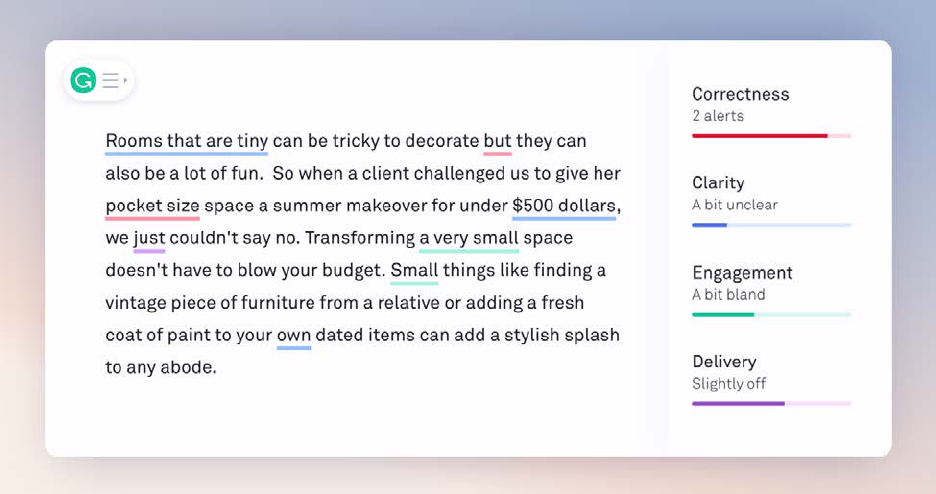
Figure 1: Example of the Algorithmic Writing Service’s interface showing suggestions on
how to improve writing
Notes: Example of the Algorithmic Writing Service applied to a paragraph of text. To receive the suggestions,
users hover their mouse over the underlined word or phrase. For example, if you hover over the first clause
“Rooms that are tiny" underlined in blue, “Tiny rooms" will pop up as a suggestion.
a mouse cursor over the underlined word or phrase, the user sees suggestions for fixing
spelling and grammar errors. The Algorithmic Writing Service also advises on punctuation,
word choice, phrase over-use, and other attributes related to clarity, engagement, tone, and
style.
According to the Algorithmic Writing Services website, the software uses a combina-
tion of transformer models and rule-based systems to provide its recommendations. Unlike
Large Language Models like ChatGPT or BingChat, this system is not generative—it cannot
be prompted or asked questions, it simply takes the text the user has provided and suggests
improvements to it.
2.4 Platform profile approval
Of the experimental sample, 46% of workers allocated into the experiment upon registration
complete and submit their profiles. When jobseekers finish setting up their profiles, they
have to wait to be approved by the platform. The platform approves jobseekers who have
filled out all the necessary information, uploaded ID, and provide bank details so they can
be paid. The platform can reject jobseekers at their discretion. However, platform rejection
8

is somewhat rare. About 10% of profiles are rejected, usually as a part of fraud detection or
because the jobseekers leave a completely empty profile. About 41% of workers who begin
registering get all the way through the approval process.
As approval is downstream of profile creation, this step creates a potential problem for
interpreting any intervention that changes profile creation. For example, it could be that the
treatment leads to a greater probability of platform approval. Or, the treatment could have
made jobseekers more likely to complete the registration process and submit their profile,
both of which could effect hiring. While unlikely given the mechanistic rules the platform
applies, this is possible, and we investigate this potential issue in multiple ways.
First, we check whether there is any evidence of selection and find no evidence that
treated jobseekers are no more likely either to submit their profiles and or to receive ap-
proval.
6
Second, in our main analysis, we condition on profile approval in our regressions. We
also perform robustness checks where we report the same analysis not conditioned on profile
approval and where we control for profile approval as a covariate. All findings are robust to
these strategies, a result described in Section 4.5.
2.5 Description of data used in the analysis
The dataset we use in the analysis consists of the text of jobseekers’ resumes as well as all
of their behavior on the platform between the time they registered—between June 8th and
July 14th 2021—and August 14th, 2021. We construct jobseeker level data, including the
title and text of their profile, the number of applications they send in their first month on
the platform, the number of invitations they receive to apply for jobs, the number of inter-
views they give, and the number of contracts they form with employers. The most common
categories listed as worker’s primary job categories are, in order of frequency, Design &
Creative, Writing, Administrative Support, and Software Development.
In Table 1 we present summary statistics about the jobseekers in the full experimental
sample, as well as the sample conditioned on platform approval. Jobseekers with writing as
their primary area of work make up 17% of the sample. Only 14% of jobseekers are based
in the US, and over 80% are based in a country where English is not the native language.
2.6 Constructing measures of writing quality
We do not observe the changes that the Algorithmic Writing Service suggested—we simply
observe the resumes that result. As such, we need to construct our own measures of writing
6
See Appendix Table A3 for regression output.
9
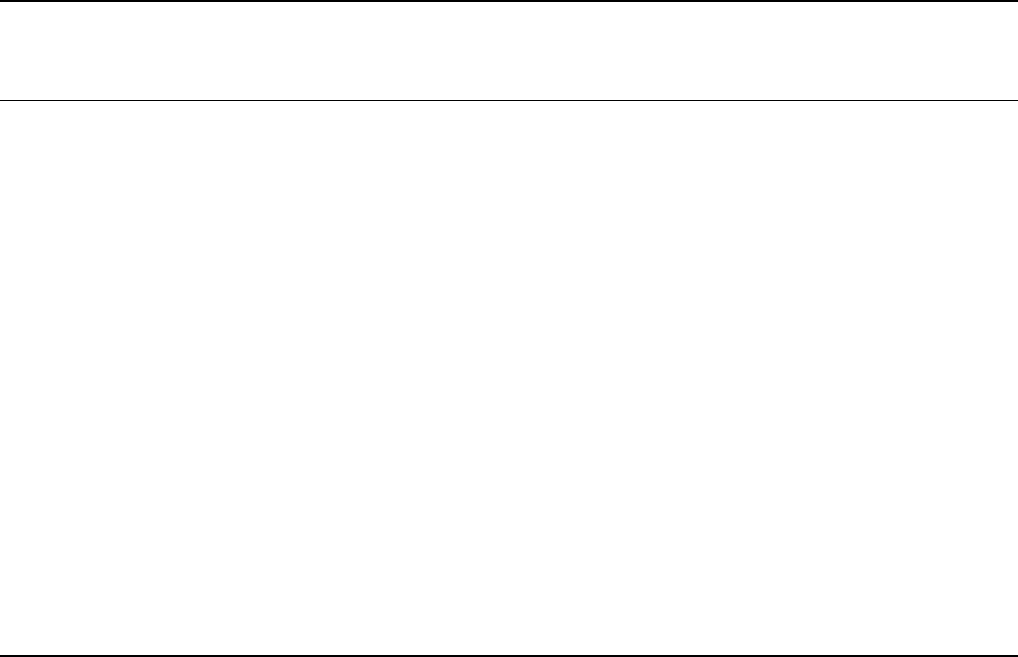
Table 1: Comparison of jobseeker covariates, by treatment assignment
Treatment
mean:
¯
X
TRT
Control
mean:
¯
X
CTL
Difference in means:
¯
X
TRT
−
¯
X
CTL
p-value
Full sample description: N = 480,948
Resume submitted 0.456 (0.001) 0.455 (0.001) 0.001 (0.001) 0.450
Platform approved 0.407 (0.001) 0.406 (0.001) 0.002 (0.001) 0.185
Resume length 32.911 (0.116) 32.860 (0.117) 0.051 (0.165) 0.756
Profile hourly rate 18.843 (0.126) 18.917 (0.126) -0.075 (0.178) 0.676
Flow from initial allocation into analysis sample
Treatment (N) Control (N) Total (N)
Total jobseekers allocated 240,231 240,717 480,948
,→ who submitted their profiles 109,638 109,604 219,242
,→ and were approved by the platform 97,859 97,610 195,469
,→ with non-empty resumes 97,479 97,221 194,700
Pre-allocation attributes of the analysis sample: N = 194,700
From English-speaking country 0.182 (0.001) 0.183 (0.001) -0.002 (0.002) 0.361
US-based 0.141 (0.001) 0.143 (0.001) -0.002 (0.002) 0.221
Specializing in writing 0.173 (0.001) 0.176 (0.001) -0.003 (0.002) 0.105
Specializing in software 0.115 (0.001) 0.115 (0.001) 0.000 (0.001) 0.771
Resume length 70.393 (0.222) 70.260 (0.222) 0.134 (0.314) 0.670
Notes: This table reports means and standard errors of various pre-treatment covariates for the treatment
group and the control group. The first panel shows the post-allocation outcomes of the full experimental
sample i) profile submission, ii) platform approval, iii) length of resume in the number of words, iv) profile
hourly wage rate in USD. The means of profile hourly rate in treatment and control groups are only for those
profiles which report one. The reported p-values are for two-sided t-tests of the null hypothesis of no difference
in means across groups. The second panel describes the flow of the sample from the allocation to the sample
we use for our experimental analysis. The complete allocated sample is described in the first line, with each
following line defined cumulatively. The third panel looks at pre-allocation characteristics of the jobseekers in
the sample we use for our analysis, allocated jobseekers with non-empty resumes approved by the platform. We
report the fraction of jobseekers i) from the US, UK, Canada, or Australia, ii) from the US only, iii) specializing
in writing jobs, iv) specializing in software jobs, and v) the mean length of their resumes in the number of
words.
quality to determine if the treatment was delivered.
Algorithmic Writing Service provides text improvement suggestions along several di-
mensions. We measure writing quality of each resume by using a different service, Lan-
guageTool, an open-source software that uses language models to determine various types of
10

writing errors.
7
LanguageTool is a rule-based dependency parser that identifies errors (rule
violations) and categorizes them. Some example categories include “Nonstandard Phrases,”
“Commonly Confused Words,” “Capitalization,” and “Typography.” For example, the non-
standard phrase “I never have been" would be flagged with a suggestion to replace it with “I
have never been.”
8
Our primary measures of writing quality are the error rates for each of
these error types, as well as the overall error rate. The error rate is determined by totaling
the number of all error types classified by LanguageTool, normalized by number of words in
the resume.
3 Observational results
Before presenting results of the field experiment, we explore the relationship between re-
sume writing quality and hiring using observational data from this market.
3.1 The association between writing quality and hiring probabili-
ties
More writing errors are associated with lower hiring probabilities in the observational data.
In Figure 2, we plot jobseekers’ hiring outcomes versus the error rate, controlling for the
length of the resume. The sample is the resumes of all jobseekers who registered for the
platform over the month of May 7th through June 7th, 2021, prior to the experiment. The
distribution of the error rate is very right skewed—over 95% of jobseekers’ resumes have
error rates of less than 25%. In Figure 2, the x-axis is the deciles of error rate, truncated to
include only jobseekers whose resumes have error rates of less than 25%. The y-axis is the
residuals from regressing the error rate on whether or not the jobseeker is hired, controlling
for number of words in the resume. Generally, jobseekers with resumes with a lower error
rate (deciles to the left of the plot) are more likely to be hired.
In order to unpack the various types of errors, in Table 2 we show the correlation between
hiring outcomes and each individual type of language error in the observational data.
9
In
the first specification, we show the correlation between the error rate for the various types
of language errors and an indicator for whether or not the jobseeker is ever hired in their
first 28 days after registering for the platform . In the second specification, the outcome is
simply the number of contracts formed over the jobseeker’s first month. In Columns (3) and
(4), we control for the jobseekers’ profile hourly rate and primary category of work.
7
This is a different software than the Algorithmic Writing Service.
8
For a more detailed explanation of all of the rule categories, see Appendix Table A4.
9
In Appendix Table A2 we summarize the frequency of these error types in the observational data.
11
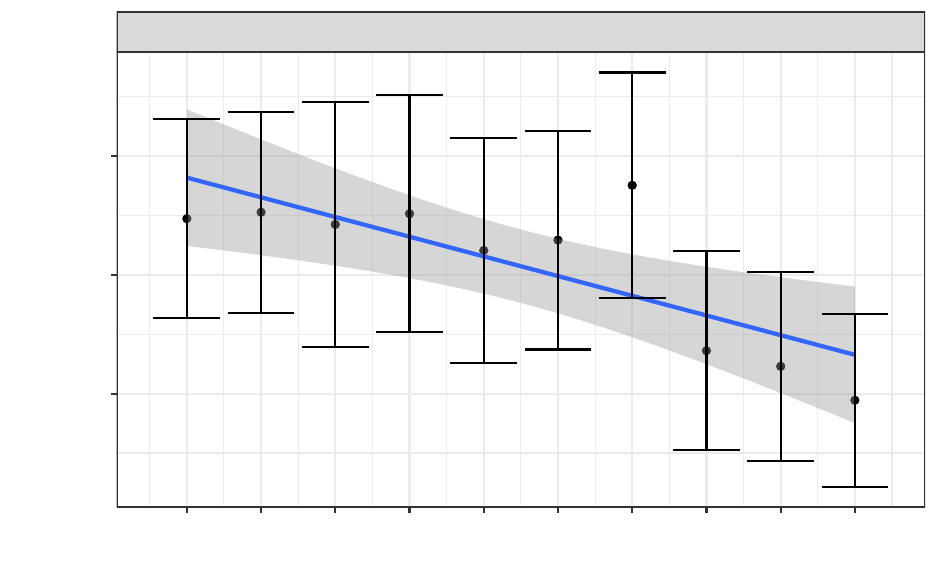
Figure 2: Association between resume error rate and if a jobseeker is hired
Probability of being hired at least once
1 2 3 4 5 6 7 8 9 10
−0.005
0.000
0.005
Deciles in terms of resumes' error rate
Notes: These data show the relationship between the error rate on a jobseekers’ resume with the probability
they were hired within a month, controlling for resume length. The error rate is determined by totaling the
number of all error types classified by LanguageTool, normalized by number of words in the resume. A 95%
confidence interval is plotted around each estimate. The sample is all new jobseekers who were approved by
the platform between June 1st and June 7th, 2021, with resumes of more than 10 words. The x-axis is error
rate deciles on the sample of resumes where the error rate is less than 25%.
12
Resumes with more per word grammar errors, typos, typography errors, and miscella-
neous errors are all hired less. This linear model places some unreasonable assumptions
like constant marginal effects on the relationship between various writing errors and hir-
ing. There may be interactions between these error types. However, it is still useful to
summarize the relationships. We can see generally negative relationships between writing
error rate and hiring. In Columns (3) and (4) where we add controls, we see coefficients
get smaller in magnitude as we would expect, but the significance does not disappear. For
robustness we repeat these analysis in levels in Appendix Table A6.
In terms of magnitude, one additional error of any type is associated with that jobseeker
being hired 1.4% less. In Appendix Table A5 we show the relationship between total number
of errors and hiring outcomes and report these results in both levels and normalized by
resume length. The negative relationship between writing errors and hiring persists in all
specifications.
13

Table 2: Hiring outcomes predicted based on language errors (normalized by word count) in
observational data
Dependent variable:
Hired Number of Contracts Hired Number of Contracts
(1) (2) (3) (4)
Capitalization Error −0.038 −0.075 −0.026 −0.055
(0.025) (0.048) (0.023) (0.045)
Possible Typo −0.022
∗∗∗
−0.030
∗∗
−0.013
∗∗
−0.016
(0.007) (0.013) (0.006) (0.012)
Grammar Error −0.314
∗∗∗
−0.534
∗∗∗
−0.210
∗∗∗
−0.360
∗∗∗
(0.051) (0.097) (0.047) (0.092)
Punctuation Error 0.0002 −0.0001 0.0001 −0.0002
(0.003) (0.006) (0.003) (0.006)
Typography Error −0.069
∗∗∗
−0.098
∗∗∗
−0.050
∗∗∗
−0.066
∗∗∗
(0.014) (0.026) (0.013) (0.025)
Style Error 0.130
∗∗
0.261
∗∗
0.115
∗∗
0.234
∗∗
(0.062) (0.119) (0.058) (0.112)
Miscellaneous Error −0.220
∗∗∗
−0.414
∗∗∗
−0.121 −0.252
∗
(0.079) (0.151) (0.074) (0.143)
Redundant Phrases −0.264 −0.433 −0.149 −0.240
(0.229) (0.437) (0.213) (0.414)
Nonstandard Phrases −0.124 0.804 −0.193 0.699
(0.882) (1.681) (0.819) (1.591)
Commonly Confused Words −0.331 −0.761 −0.190 −0.531
(0.324) (0.618) (0.301) (0.584)
Collocations −0.380
∗
−0.637 −0.262 −0.438
(0.228) (0.434) (0.211) (0.411)
Semantic Error −0.532 −0.340 −0.445 −0.191
(0.583) (1.112) (0.541) (1.052)
Constant 0.036
∗∗∗
0.053
∗∗∗
0.026
∗∗∗
0.036
∗∗∗
(0.001) (0.002) (0.001) (0.002)
Controls X X
Observations 65,114 65,114 65,114 65,114
R
2
0.002 0.001 0.140 0.106
Notes: This table analyzes correlation between various writing errors on jobseekers’ resumes and their hiring
outcomes. The independent variables, writing errors, are divided by the number of words in the jobseekers’
resume. Hired is defined as 1 if the jobseeker was ever hired in their first month after registering for the
platform, and 0 if else. Number of Contracts is defined as the number of unique jobs they begin working in
that time. Columns (3) and (4) include controls for profile hourly rate and job category. Writing errors are
defined by LanguageToolR. The sample is made up of all jobseekers who registered for the platform in the
week before the experiment who submitted non-empty resumes.
Significance indicators: p ≤ 0.10 : ∗, p ≤ 0.05 : ∗∗ and p ≤ .01 : ∗ ∗ ∗.
14

4 Experimental results
We look at three main kinds of experimental results. First, we examine how the treatment
affected the text of resumes. Next, we look at employment outcomes for those treated work-
ers. Third, we will look at how the treatment impacted the quality of work, as assessed by
employer reviews and whether or not a worker is rehired.
4.1 Algorithmic writing assistance improved writing quality
The first step of our analysis is to measure the effect that the Algorithmic Writing Service
has on the treatment group’s writing. We begin by analyzing the effect of the treatment on
all types of writing error rates, as defined by LanguageTool. Figure 3 displays the effect of
treatment on the number of each type of writing error, normalized by resume length.
10
For
treatment effects measured in percentage terms, we calculate the standard errors using the
delta method.
In the first facet of Figure 3, we find that jobseekers in the treatment group made 5%
fewer errors in their resumes. Breaking these down by error type, we find that jobseekers
in the treatment group had a significantly lower rate of errors of the following types: capi-
talization, collocations, commonly confused words, grammar, possible typos, miscellaneous,
and typography. We find larger treatment effects for errors associated with writing clarity
than for many others. For example, two of the largest magnitudes of differences in error rate
were commonly confused words and collocations, where two English words are put together
that are not normally found together. Interestingly, the treatment group had more “style”
errors, paralleling our results from the observational data (see Table 2).
4.1.1 Heterogeneous treatment effects to writing quality
A natural question is which jobseekers benefited most from the treatment. Appendix Ta-
ble A12 interacts pre-randomization jobseeker attributes with the treatment. We can see
that jobseekers from the US or from English-speaking countries,
11
all have fewer errors in
“levels.”
The treatment negatively impacted the writing error rate of all subgroups by country
of origin. We find that jobseekers from non-native English-speaking countries experience
significantly larger treatment effects to their error rate. Still, effects to their Anglophone
counterparts are positive and significant.
10
The treatment had no effect on the length of resumes—see Appendix Table A7.
11
We define whether a jobseeker is from an Anglophone country, by whether they login to the platform from
USA, UK, Canada, or Australia.
15
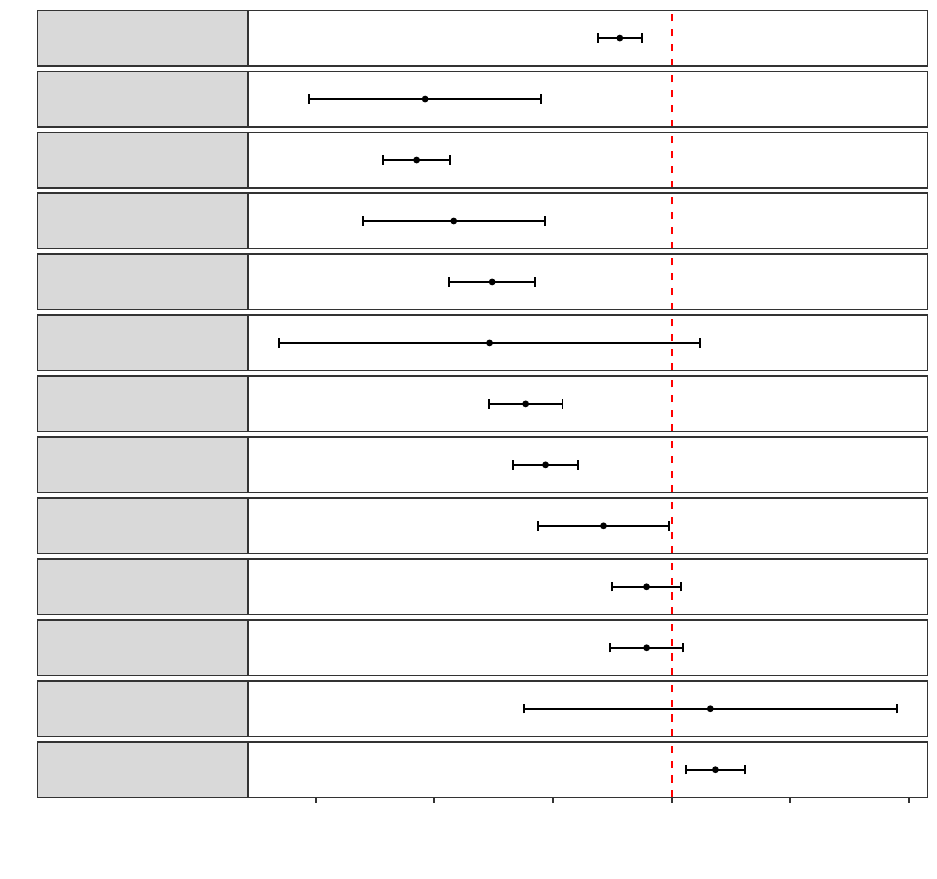
Figure 3: Effect of the algorithmic writing assistance on resume error rates
All Error Types
Commonly Confused Words
Miscellaneous Errors
Collocations
Capitalization Errors
Nonstandard Phrases
Grammar Errors
Typographic Errors
Redundant Phrases
Punctuation Errors
Possible Typo
Semantic Errors
Style Errors
−30%
−20%
−10%
0%
10%
20%
Percentage (%) Difference between Treatment and Control Group
Notes: This plot shows the effect of the treatment on various writing errors in jobseekers’ resumes, normalized
by number of words in the resume. Point estimates are the percentage change in the dependent variable versus
the control group for the treatment groups. A 95% confidence interval based on standard errors calculated
using the delta method is plotted around each estimate. The experimental sample is of all new jobseekers
who registered and were approved for the platform between June 8th and July 14th, 2021, and had non-empty
resumes, with N = 194,700. Regression details can be found in Appendix Tables A8 and A9.
16
In Appendix Table A13 we focus on jobseekers who list their primary category of work
as “Writing” and in Column (1) show that the treatment even has a significant impact on
the writing on writers’ resumes.
4.2 Effects to workers employment outcomes
Access to the treatment impacted whether or not jobseekers were hired. Figure 4 summa-
rizes the treatment effects on the primary hiring outcomes.
4.2.1 Treated workers did not change their job search strategy or behavior
The potential for the treatment to impact jobseeker search behavior or intensity could com-
plicate our desire to focus on employer decision-making. Job applications have been shown
to be costly (Abebe, Caria and Ortiz-Ospina, 2021) and job search intensity could depend
on jobseekers expectation of their own hireability. It is possible that treated jobseekers re-
alized they were in an experiment and increased their search efforts, knowing they had
higher quality resumes. In that case, we could not interpret our treatment effect as being
driven by employers’ improved perceptions of treated jobseekers. We therefore plot the per-
centage change in job search metrics for jobseekers in the treatment versus those in the
control group in Figure 4a) and Figure 4b) and find no evidence that jobseekers changed
their search behavior.
In Figure 4a), the outcome is the number of applications a jobseeker sends out over
their first 28 days after registering. We find no effect of the treatment on the total number
of applications sent. In Figure 4b), the outcome is the mean wage bid proposed by the
jobseekers on those applications. Average wage bids in both the treatment and control
groups were $24 per hour. This lack of impact makes sense as jobseekers were not made
aware of the treatment.
Table 3 provides regression results for the effects of the treatment on jobseekers’ search
behavior. Column (1) demonstrates that treated jobseekers did not apply for more jobs than
those in the control group over the experimental period. In Column (2), we find that treated
jobseekers do not apply to more hourly jobs than those in the control group. They also could
have bid for higher wages knowing they had better-looking resumes. In Column (3), where
we narrow the sample to only applications to hourly jobs, we see no evidence of a treatment
effect on hourly wage bids.
17
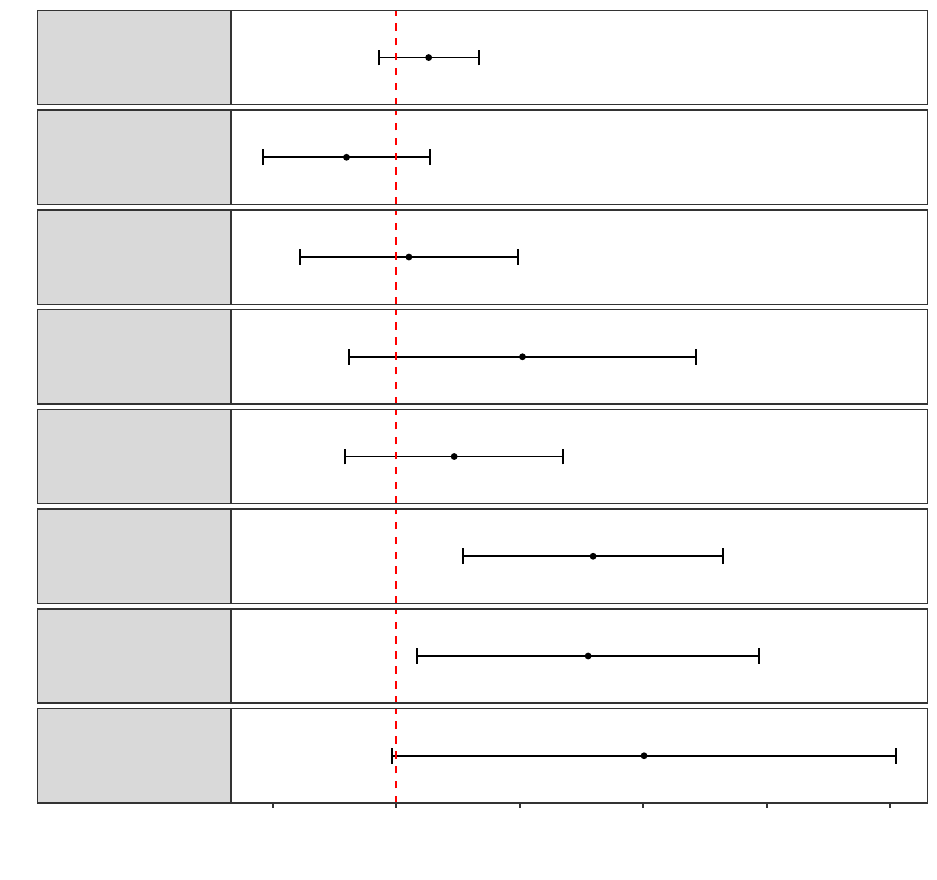
Figure 4: Effect of algorithmic writing assistance on hiring outcomes
a) Number of applications
b) Mean worker wage bid
c) Number of invitations
to apply
d) Number of shortlists
e) Number of interviews
f) Hired
g) Number of contracts
h) Mean hourly rate
for contracts
−5%
0%
5%
10%
15%
20%
Percentage (%) Difference between Treatment and Control Group
Notes: This analysis looks at the effect of treatment on hiring outcomes on jobseekers in the experimental
sample. The x-axis is the difference in the mean outcome between jobseekers in the treated group and the
control group. A 95% confidence interval based on standard errors calculated using the delta method is plotted
around each estimate. The experimental sample is of all new jobseekers who registered and were approved
for the platform between June 8th and July 14th, 2021, and had non-empty resumes, with N = 194,700.
Regression details on the number of applications and wage bid can be found in Table 3. Regression details
on invitations, interviews, hires, and the number of contracts can be found in Table 4. Regression details on
hourly wages can be found in Table 5.
18

Table 3: Effects of writing assistance on jobseekers’ application behavior
Dependent variable:
Num Applications Num Hourly Applications Mean Hourly Wage Bid
(1) (2) (3)
Algo Writing Treatment 0.023 0.012 −0.492
(0.018) (0.011) (0.427)
Constant 1.768
∗∗∗
0.919
∗∗∗
24.425
∗∗∗
(0.013) (0.008) (0.302)
Observations 194,700 194,700 59,854
R
2
0.00001 0.00001 0.00002
Notes: This table analyzes the effect of the treatment on jobseekers’ application behavior. The experimental
sample is made up of all new jobseekers who registered and were approved by the platform between June
8th and July 14th, 2021 and had non-empty resumes. The outcome in Column (1) is the number of total
applications a jobseeker sent out between the time the experiment began and one month after it ended. The
outcome in Column (2) is the number of specifically hourly applications sent out in that same time period.
The outcome in Column (3) is the mean hourly wage bid they proposed for those hourly jobs, and the sample
narrows to only jobseeker who submitted at least one application to an hourly job.
Significance indicators: p ≤ 0.10 : ∗, p ≤ 0.05 : ∗∗ and p ≤ .01 : ∗ ∗ ∗.
4.2.2 The treatment did not affect employer recruiting
Employers are able to seek out workers using the platform’s search feature to invite jobseek-
ers to apply to their job openings. In Figure 4c), the outcome is the number of invitations
to apply for a job that the jobseeker receives in their first month. We find no effect of the
treatment on employer invitations.
Although it may seem surprising given the results on hires and contracts, it makes sense
given that our experimental sample consists of only new jobseekers to the platform. New
entrants almost never appear in the search results when employers search for jobseekers,
given that their rank is determined by their platform history. Therefore, we would not
expect the treatment to affect invitations to apply. Table 4 Column (1) provides the details
of this regression.
After jobseekers apply, employers can sort through the applications to their job and high-
light applications they are especially interested in through a feature called shortlisting. In
Figure 4d) we observe that jobseekers in the treatment group had applications shortlisted
5% more than jobseekers in the control group, although this effect is not significant. Table 4
Column (2) provides the details of this regression.
The treatment had no significant impact to number of interviews. In Figure 4e), we show
no effect of the treatment on number of interviews. Interviews, while technically feasible,
are rare on this platform, and do not correspond the types of interviews given in offline
19

labor markets. Here, an interview is defined as any correspondence via message between
the employer and applicant, prior to an offer being made. In the control group the average
jobseeker gives 0.18 interviews over the course of their first month after registering, with
the treatment group receiving 2.5% more interviews. Table 4 Column (3) provides the details
of this regression.
4.2.3 Treated jobseekers were more likely to be hired
The treatment raised jobseekers’ hiring probability and the number of contracts they formed
on the platform. In Figure 4f), the outcome is a binary indicator for whether or not a job-
seeker is ever hired in their first 28 days on the platform. During the experiment, 3% of
jobseekers in the control group worked at least one job on the platform. Treated jobseekers
see an 8% increase in their likelihood of being hired in their first month on the platform.
Jobseekers in the treated group formed 7.8% more contracts overall. In Figure 4g), the
outcome is the number of contracts a jobseeker worked on over their first month. In Table 4
Column’s (4) and (5) we report these results in levels.
Table 4: Effect of algorithmic writing assistance on hiring outcomes
Dependent variable:
Num Invitations Num Shortlists Num Interviews Hired x 100 Num Contracts
(1) (2) (3) (4) (5)
Algo Writing Treatment 0.001 0.002 0.004 0.247
∗∗∗
0.004
∗∗
(0.003) (0.001) (0.004) (0.080) (0.002)
Constant 0.142
∗∗∗
0.039
∗∗∗
0.178
∗∗∗
3.093
∗∗∗
0.047
∗∗∗
(0.002) (0.001) (0.003) (0.057) (0.001)
Observations 194,700 194,700 194,700 194,700 194,700
R
2
0.00000 0.00001 0.00001 0.00005 0.00003
Notes: This analysis looks at the effect of treatment on hiring outcomes on jobseekers in the experimental
sample. The Column (1) outcome Invitations is the number of times they were recruited to a job over their
first month. Column (2) is the number of times their application was shortlisted over that month. Column
(3) is the number of interviews they gave over that month. Column (4) defines Hired x 100 as one hundred
times the probability the jobseeker was hired over that month. Column (5) defines Number of Contracts as
the number of unique jobs they work over the month after they register for the platform. The experimental
sample is of all new jobseekers who registered and were approved for the platform between June 8th and July
14th, 2021 and had non-empty resumes. Significance indicators: p ≤ 0.10 : ∗, p ≤ 0.05 : ∗∗ and p ≤ .01 : ∗ ∗ ∗.
4.2.4 Hourly wages in formed matches were higher
Treated workers had 10% higher hourly wages than workers in the control group. In Fig-
ure 4h), the outcome is the mean hourly rate workers earned in jobs they worked over their
20

first month on the platform.
12
In Table 5 Column (1) we show that in the control group, workers on average made
$17.25 per hour. In the treatment group, workers made $19.01 per hour, with a p-value of
0.05. Since workers did not bid any higher, it is possible that employers are hiring more
productive workers, or that they thought the treated workers were more productive. If that
is the case, the “signaling view” would predict that employers would then be disappointed
with the workers they hired, which we should be able to observe in worker ratings.
Because these effects are downstream of hiring, these higher wages could be a result
of bargaining or due to a composition effect. We find that the initial wage bids are almost
always the same as the hourly wage and there is very little evidence of bargaining. In this
sample of hires, in only 0.2% of contracts the freelancer proposes more than one bid before
being hired. Initial wages and bids are 92% correlated for hourly jobs and 95% correlated
for fixed price jobs. In Table 5 Column (2) we regress the treatment on an indicator variable
defined as 1 if the jobseekers’ initial wage bid is equal to the hourly wage they are hired for,
and 0 if not. Using this definition as well, we see no evidence that the treatment increased
bargaining.
Taken together with the fact that there is no effect of the treatment to asking wage bids,
as we show in Table 3, this evidence points to the increase in hourly wages being driven by
a composition effect.
4.2.5 Hours worked were unaffected by the treatment
After examining the effects of the treatment on hiring outcomes, we now turn our attention
to employer satisfaction with the workers’ labor. One proxy for employer satisfaction is each
worker’s total number of hours worked, as this can be an indication of how much demand
there is for their services. In Table 6 Column (1) we show that treated workers worked no
fewer hours than workers in the control group. This sample for this analysis is the entire
experimental sample who finished registration and were approved by the platform. The
average worker in the control group only works for 2.6 hours during their first month on
the platform. However, among those who are ever hired, the average worker in the control
group works 238 hours.
Lastly in Column (2) we show the impact of the treatment to the fraction of workers that
are ever rehired. Unlike the other outcomes, rehires are conditional on a worker being hired
at least once over their first month on the platform. All jobseekers in this sample have been
hired at least once, and the outcome “ever rehired” is 1 if the jobseeker is ever hired a second
12
Hourly wage rates for new entrants are not representative of rates on the platform. If a new entrant gets
hired for their first job, they tend to experience rapid wage growth.
21
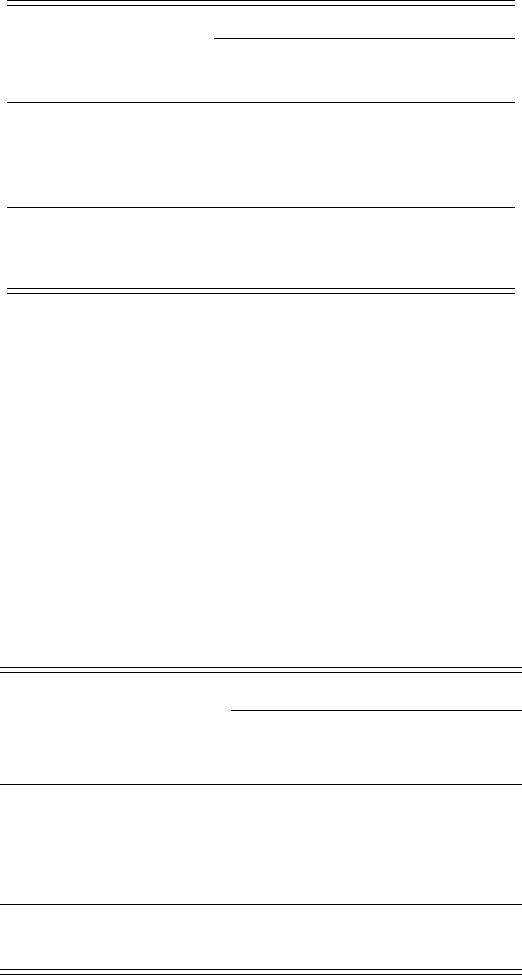
Table 5: Effect of algorithmic writing assistance on average contract wages
Dependent variable:
Hourly wage rate I(Bargaining)
(1) (2)
Algo Writing Treatment 1.763
∗∗
−0.027
(0.834) (0.020)
Constant 17.247
∗∗∗
0.277
∗∗∗
(0.611) (0.015)
Clustered SEs X X
Observations 3,305 1,949
R
2
0.001 0.001
Notes: This analysis looks at the effect of treatment on hourly wages of contracts for jobseekers in the exper-
imental sample, conditional on a hire. The sample is at the job level, and we cluster standard errors at the
worker level. The outcome in Column (1), hourly wage rate, is defined as the max hourly wage rate a worker
recieves for that job. In Column (2) the outcome is an indicator which is 1 if the jobseeker’s wage bid is not
equal to the wage they are hired at, and 0 if else. The experimental sample is of all new jobseekers who regis-
tered and were approved for the platform between June 8th and July 14th, 2021 and had non-empty resumes,
for all jobs they worked within 28 days of registering for the platform. Significance indicators: p ≤ 0.10 : ∗,
p ≤ 0.05 : ∗∗ and p ≤ .01 : ∗ ∗ ∗.
Table 6: Effects of algorithmic writing assistance on hours worked and rehires
Dependent variable:
Hours worked Ever rehired
(1) (2)
Algo Writing Treatment 0.412 −0.003
(0.303) (0.007)
Constant 2.649
∗∗∗
0.079
∗∗∗
(0.214) (0.005)
Observations 194,700 6,263
R
2
0.00001 0.00003
Notes: This table analyzes the effect of the treatment on measures of hours worked and rehires. In Column
(1) the outcome is the number of total hours worked by a worker in their first 28 days on the platform. In
Column (2) the outcome is the fraction of workers who are ever rehired for different jobs by the same employer,
conditional on jobseekers working at least one job. The experimental sample is of all new jobseekers who
registered and were approved by the platform between June 8th and July 14th, 2021 and had non-empty
resumes. Significance indicators: p ≤ 0.10 : ∗, p ≤ 0.05 : ∗∗ and p ≤ .01 : ∗ ∗ ∗.
22

time by their first employer and 0 if they are only hired once. About 8% of all workers are
rehired by the same employer at least once over the course of the experiment. This fraction
does not differ in the treatment and control group.
4.3 Employers satisfaction was unaffected by the treatment
At the end of every contract, employers rate and review the workers by reporting both public
and private rating to the platform. Private ratings are not shared with the worker. In
the control group, workers had an average private rating of 8.63. In Figure 5a) we show
that treated workers who formed any contracts over the experimental period did not have
statistically different private ratings than workers in the control group. In Column (1) of
Table 7 report the results from this regression. We show that workers in the treated group
have an average private rating of 8.56 with a standard error of 0.08. We may also worry that
if employers are less happy with the workers quality or productivity, that they may be more
or less likely to leave a review at all. Figure 5b) we show that workers in the treatment
group are not more or less likely to receive any rating than workers in the control group.
Table 7: Effect of algorithmic writing assistance on contract ratings
Dependent variable:
Private rating Positive text review Left any rating Left any text review
(1) (2) (3) (4)
Algo Writing Treatment −0.077 0.015 −0.002 0.006
(0.082) (0.019) (0.012) (0.008)
Constant 8.633
∗∗∗
0.859
∗∗∗
0.624
∗∗∗
0.138
∗∗∗
(0.059) (0.014) (0.008) (0.006)
Observations 4,250 1,185 6,263 6,263
R
2
0.0002 0.001 0.00001 0.0001
Notes: This analysis looks at the effect of treatment on contract outcomes for jobseekers in the experimental
sample. Column (1) defines private rating as the mean private rating on all jobs given by employers to the
workers after the job ended, at the worker level. In Column (2) we take the text of the reviews left by employers
on each job and use sentiment analysis (model: distilbert-base-uncased-finetuned-sst-2-english) to impute
whether the review is positive, neutral, or negative, labeled one if it is positive or neutral. The outcome is the
mean of these ratings over all contracts in the sample. Column (3) is the percentage of contracts worked where
the freelancer recieved any private rating. And Column (4) is the percentage of contracts worked where the
freelancer recieved any text based review. The experimental sample is of all new jobseekers who registered and
were approved for the platform between June 8th and July 14th, 2021 and had non-empty resumes, for all jobs
they worked within 28 days of registering for the platform. Significance indicators: p ≤ 0.10 : ∗, p ≤ 0.05 : ∗∗
and p ≤ .01 : ∗ ∗ ∗.
When the employers give these ratings they are also able to leave text reviews. While
numerical ratings have become inflated in recent years, Filippas et al. (2022) show that the
sentiments associated with the text of reviews has increased significantly less over time.
23

Figure 5: Effect of algorithmic writing assistance on ratings
a) Private rating
b) Left private rating
c) Text has positive sentiment
d) Left text review
e) Communication
f) Quality
g) Skills
h) Availability
i) Deadlines
−5%
0%
5%
10%
15%
Percentage (%) Difference between Treatment and Control Group
Notes: This analysis looks at the effect of treatment on ratings outcomes on jobseekers in the experimental
sample. Private ratings are on a scale from one to ten. Communication, Quality, Skills, Availability, and
Deadlines ratings are public and left as star ratings, on a scale from one to five. The x-axis is the difference in
the mean outcome between jobseekers in the treated group and the control group. A 95% confidence interval
based on standard errors calculated using the delta method is plotted around each estimate. The experimental
sample is of all new jobseekers who registered and were approved for the platform between June 8th and July
14th, 2021, and had non-empty resumes that were hired in their first month on the platform, with N = 4, 250.
Regression details on private ratings and text reviews can be found in Table 7. Regression details on public
ratings can be found in Appendix Table A16.
24

This means that text reviews are likely more informative about the workers’ quality than
the numerical ratings. We use a BERT text classification model (HF canonical model main-
tainers, 2022) to label each review as having positive or negative sentiment. These clas-
sifications are significantly correlated with the private ratings, with a Pearson correlation
coefficient of 0.54. In Figure 5c) we show that the treated workers’ average text reviews
are not statistically different from the average sentiment of the reviews for control workers.
In Figure 5d) we show that workers in the treatment group are not more or less likely to
receive any text review than workers in the control group. Results from these regressions
can be found in Table 7.
In Figure 5e) through i) we report the results of the effect of the treatment on the em-
ployers’ public ratings of the workers. Each outcome is a public rating the employers give
to the workers at the end of a contract. Employers rate the workers communication, skills,
quality of work, availability, cooperation, and ability to make deadlines. Each rating is given
on a five point scale. There is less variation in the public ratings than in the private ones,
and the average rating for each attribute is over 4.75 stars. Like the private ratings, there
are no significant effects of the treatment to any of the ratings, including to workers’ com-
munication skills. And the point estimate of the treatment effect to the quality of the work
done is even positive. Results from these regressions can be found in Appendix Table A16.
4.3.1 How much power do we have to detect worse contractual outcomes?
Given the null effect of the treatment to ratings, a natural question is how much power is
available to detect effects. While we do find a substantial increase in hiring—8%—these
marginal hires are mixed in with a much larger pool of “inframarginal” hires that would
likely be hired anyway, but for our intervention. How much worse could those marginal
applicants have been and still get our results to private ratings in the treatment?
Let I indicate “inframarginal” jobseekers who would have been hired in the treatment
or control. Let M indicate “marginal” jobseekers who are only hired in the treatment. For
workers in the control group, the average private rating will be
¯
r
C
=
¯
r
I
. But for the treat-
ment, the mean rating is a mixture of the ratings for the inframarginal and the ratings for
the induced, marginal applicants, and so
¯
r
T
=
¯
r
I
+ τ
¯
r
M
1 + τ
(1)
where τ is the treatment effect. We assume no substitution, making our estimates conser-
25
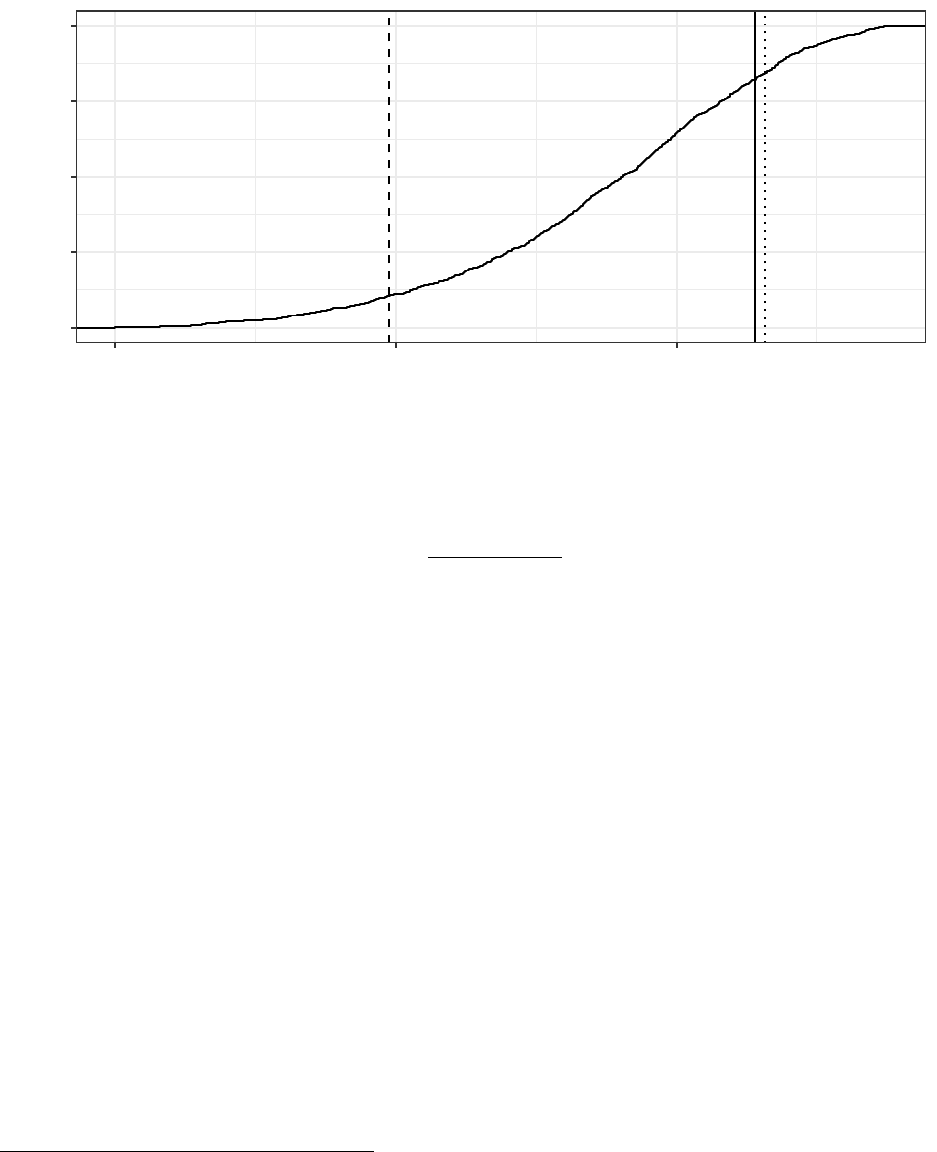
Figure 6: Sampling distribution of the private ratings of marginal hired jobseekers
Trt
Mean
Rating
Ctl
Mean
Rating
Ctl Mean Rating − 1 Std Dev
0.00
0.25
0.50
0.75
1.00
4 6 8
Bootstrap estimate of mean private ratings for induced (marginal) hires
CDF
vative. The sampling distribution of the mean rating for the marginal group is
¯
r
M
=
¯
r
T
(1 + τ) −
¯
r
C
τ
(2)
Our course,
¯
r
T
, τ and
¯
r
C
are all themselves random variables. Furthermore, they are not
necessarily independent. To compute the sampling distribution of
¯
r
M
, we bootstrap sam-
ple both the hiring regressions and the private feedback regressions on the experimental
sample.
13
Because we do not have feedback on workers who are never hired, we use the
estimates values to calculate
¯
r
M
. Figure 6 shows the sampling distribution of
¯
r
M
.
The treatment actual rating is plotted as a dotted line and control actual rating is plotted
as a solid vertical line. The distribution is centered at these mean values.
The dashed line indicates the control mean rating minus one standard deviation in the
private ratings (where the standard deviation is 2.4). Comparing this value to the distri-
bution of
¯
r
M
, this value (at the dashed line) lies at less than 0.1 of the density. In short,
it would be quite surprising for us to get the results we have—an 8% increase in hires and
slightly higher (but not significant ratings) if the actual marginal hires were a standard
deviation worse.
Due to concerns about the loss of information in ratings caused by ratings inflation, it
is reasonable to question the level of variation that could realistically be observed, even
13
We define this sample as the workers allocated into the experiment who were approved by the platform
and had non-empty resumes. From this we bootstrap sample with replacement. We run the hiring regressions
on this sample and the ratings regressions on the same samples, narrowed to only those workers who were
ever hired.
26

in the presence of real effects. We do find variation in the ratings given to workers on the
platform. In particular, workers with profiles written in a language other than English have
an average private rating of 7.9 out of 10, which is lower than the average rating of 8.6 out
of 10 for workers with profiles in English. Among workers with profiles in English, those
based in the US have an average rating of 9.08 (with a standard deviation of 2.8), while
workers from outside the US have an average rating of 8.46 (with a standard deviation of
2.14).
We can conduct a power analysis to determine the smallest effect size we could rule out
with confidence. With 80% power and a 0.05 significance level, we can rule out any effects
larger than 0.2 of a standard deviation. The overall standard deviation of ratings is 2.4, so
an effect size of 0.2 standard deviations corresponds to a difference of 0.48 in ratings. This
effect size is within the range of variation in ratings that we see within the data. Therefore,
we can be reasonably confident that our study design would have been able to detect effects
of practical significance.
4.4 Heterogeneous treatment effects to hiring and ratings
We have already shown above in Appendix Table A12 that the treatment disproportionately
impacted the error rate in non-native English speakers’ resumes. If we look downstream to
hiring outcomes, in Appendix Table A14, we interact the same groups with the treatment
and look at their effect on an indicator for whether or not they were hired. While non-native
English speakers’ writing might benefit more from the treatment
14
, it does not translate
into more hires relative to native English speakers. In fact, we actually see positive point
estimates for effects to hiring for US and Anglophone workers, although these interaction
effects are not significant. This may appear surprising, but it is important to remember that
those workers are much more likely to be hired to begin with. Absent the treatment, the
average worker from an Anglophone country is about twice as likely to ever be hired within
their first 28 days on the platform. Because of this, in percentage terms, the treatment effect
is actually larger for non-anglophone workers, 8.4%, than it is for anglophone workers whose
treatment effect is 7.35%. These are not statistically different from each other, and both fit
comfortably inside the 95% confidence interval on the hiring effect which is (3%,13%).
Lastly, in Appendix Table A17 we report the same specifications but look for heterogene-
ity in the effects to private ratings or whether the text of the review had a positive sentiment.
These results are conditional on a hire, and therefore the point estimates are generally quite
imprecise and we lack the power to conclude much. We can see from Column (2) that An-
14
Workers from Anglophone countries have smaller treatment effects to their writing error rate in Table A12
than their Anglophone counterparts, but they still have significant positive treatment effects.
27
glophone workers are generally higher rated and Column (3) that US workers are as well.
However neither have any additional effect when interacted with the treatment.
While our results suggest robust evidence for the “clarity view”, it is certainly possible
that there are some types of work where ones writing ability is an important indicator of
their on the job performance. We look specifically at jobseekers whose primary work is in
writing in Appendix Table A13. Unfortunately, workers who specialize in writing make
up less than 10% of the sample, and the standard errors are too large to be able to very
confidently say anything about the effect of the treatment to ratings. Therefore, we do not
reject the possibility that the signaling view could be important in jobs where writing is an
important part of the output.
4.5 Robustness checks
In our main analysis, we narrow the sample to only those jobseekers whose profiles were
approved by the platform. In Appendix Table A10 we run a similar regression on the full
experimental sample, but we include profile approval as a control to see if it affects the
estimates. In this analysis, we find that the treatment effect on the number of hires is
slightly smaller than in the analysis conditional on platform approval—conditioning the
sample on only jobseekers whose profiles were approved has an estimate of 7.8% while it is
10% in the full sample. The effect on the probability of any hire is 8% in the sample of only
approved jobseekers and 8% in the unconditional sample. This approach and narrowing
the sample to only approved jobseekers would “block” the approval channel. In Appendix
Table A11 we report the same analysis not conditioned on profile approval. None of these
robustness checks change the direction or significance of any of the hiring estimates, and
the slightly larger estimates in the unconditional sample are unsurprising because platform
approval is a necessary condition for a jobseeker to be hired.
28
5 A simple model of the “clarity view” of resume writing
In this section, we formalize a rational model of how the writing intervention could (a)
increase hiring but (b) not lead to worse matches. We formalize the argument that better
writing allowed employers to better ascertain who was a potential match with a simple
model, and show how this kind of interplay between resume quality and hiring could exist
in equilibrium.
5.1 A mass of jobseekers with heterogeneous productivity
There is a unit mass of jobseekers. If hired, their productivity is θ
i
. Workers are either
high-type (θ = θ
H
) or low-type (θ = θ
L
), with θ
H
> θ
L
. Workers know their own type. It is
common knowledge that the fraction of high types in the market is γ. All workers, if hired,
are paid their expected productivity, from the employer’s point of view. Hires only last one
unit of time.
5.2 Jobseekers decide whether to put into resume-writing
Before being hired, jobseekers write resumes. Jobseekers must decide whether to put effort
e ∈ {0,1} into writing that resume. Effort itself is not observable. The cost of this effort is
jobseekers-specific and there is a distribution of individual resume effort costs. The support
of the cost distribution is [0,
¯
c]. The distribution has mass everywhere and the CDF is F
and PDF is f . Jobseekers who put in no effort have resume costs of 0, while those that put
in effort have a cost of c
i
. Critically, this cost is independent of a jobseeker’s type i.e., there
is no Spence-like assumption that better workers find it cheaper to create better resumes
(Spence, 1973).
Before making an offer, firms observe a signal of jobseekers’ type on their resume, R ∈
{0,1}. With effort, a high-type jobseeker generates an R = 1 signal; without effort, R = 0. A
low-type jobseeker generates R = 0 no matter what.
Clearly, low-types will never put in effort. The question is whether a high type will put in
effort. The decision hinges on whether the cost of resume effort is worth the wage premium
it creates. Let w
R=0
be the wage paid in equilibrium to jobseekers with R = 0. Note that
w
R=1
= θ
H
, as there is no uncertainty about a jobseeker’s type if R = 1.
A jobseeker i who is a high-type will choose e = 1 if θ
H
−w
R=0
(c
i
) > c
i
. The marginal high-
type jobseeker is indifferent between putting in effort or not, and has a resume-writing cost
29

of
ˆ
c, where
ˆ
c = θ
H
− w
R=0
(
ˆ
c). (3)
This implies that there are F(c)γ jobseekers that choose e = 1. These are the high-type
jobseekers with relatively low resume writing costs. The remaining [1 − F(c)]γ high-type
jobseekers choose e = 0. They are pooled together with the 1− γ jobseekers that choose e = 0
because they are low-types.
From the employer’s perspective, if they believe that the resume effort cost of the marginal
high-type jobseekers is
ˆ
c, the probability an R = 0 jobseekers is high-type is
p
R=0
H
(
ˆ
c) =
1 − F(
ˆ
c)
1/γ − F(
ˆ
c)
. (4)
The wage received by an R = 0 worker is
w
R=0
(
ˆ
c) = θ
L
+ (θ
H
− θ
L
)p
R=0
H
(
ˆ
c) (5)
When the cost of the marginal jobseeker is higher, more jobseekers find it worth choosing
e = 1, as F
0
(
ˆ
c) > 0. This leaves fewer high-types in the R = 0 pool, and so
d p
R=0
H
d
ˆ
c
< 0. (6)
5.3 The equilibrium fraction of high-type workers putting effort
into resume-writing
In equilibrium, there is some marginal high-type jobseeker indifferent between e = 0 and
e = 1, and so
(θ
H
− θ
L
)(1 − p
R=0
H
(
ˆ
c
∗
)) =
ˆ
c
∗
.
Figure 7 illustrates the equilibrium i.e., the cost where the marginal jobseeker is indif-
ferent between e = 0 and e = 1. The two downward-sloping lines are the pay-offs to the
marginal jobseeker for each
ˆ
c. The pay-off to R = 1 is declining, as the wage is constant (at
θ
H
) but the cost is growing linearly. The pay-off to R = 0 is also declining, from Equation 6.
Both curves are continuous.
Note that when the marginal jobseeker has
ˆ
c = 0, there is just a point-mass of high-types
that have a cost that low, i.e., f (
ˆ
c). Because the marginal jobseeker is indifferent between
30
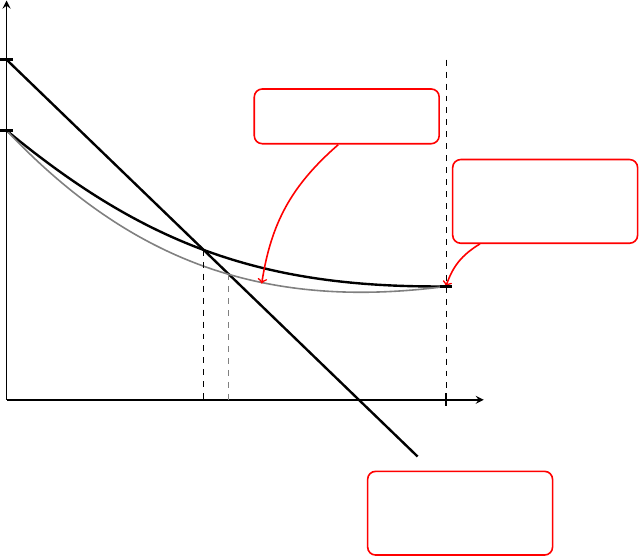
Figure 7: Equilibrium determination of the marginal high-type jobseeker indifferent be-
tween putting effort into a resume
θ
H
θ
H
γ + (1 − γ)θ
L
θ
H
−
ˆ
c
Cost to
Marginal
Worker
θ
L
0
¯
c
ˆ
c
∗
ˆ
c
∗
0
Resume writing
costs decrease
Payoff to marginal
H-type worker
when R = 0
Payoff to marginal
H-type worker
when R = 1
putting in effort and not putting in effort, jobseekers with costs of even ε will not put in
effort. Since no one finds it worthwhile to put in effort the R = 0 pool is just the expected
value of all jobseekers. And the wage is w
R=0
(
ˆ
c) = γθ
H
+ (1 − γ)θ
L
. The marginal jobseeker
pays nothing, so the pay-off is θ
H
.
At the other extreme,
ˆ
c =
¯
c, all but a point mass of jobseekers have a cost less than
this. Since the marginal jobseeker is indifferent between putting in effort at a cost of
¯
c, any
jobseeker with cost
¯
c − ε or below will put in effort. Then the R = 0 pool is purely low-types
and the wage is θ
L
. For the R = 1 market, the marginal jobseeker has a cost of
ˆ
c so the
pay-off is θ
H
−
ˆ
c. We know θ
H
> γθ
H
+ (1 − γ)θ
L
. And by assumption, θ
L
> θ
H
−
ˆ
c, and so by
the intermediate value theorem, an equilibrium
ˆ
c
∗
exists on (0,
¯
c).
5.4 A shift in the resume writing cost distribution leads to more
high-type workers choosing to exert effort
Now suppose a technology comes along that lowers resume writing costs for some, and
doesn’t increase it for any, jobseekers. This would shift F higher for all points except the
endpoints of the support, creating a new distribution of costs that first-order stochastically
31

dominates the other.
Before determining the new equilibrium, note that no matter the marginal
ˆ
c, when F
increases, the probability that an R = 0 worker is a high-type declines, as
d p
H
dF
= −
1
(F − 2)
2
< 0. (7)
This shifts the w
R=0
curve down everywhere, without changing the endpoints.
Because w
R=1
−
ˆ
c is downward sloping, it intersects w
R=0
(
ˆ
c) at a higher value of
ˆ
c. At
the new equilibrium, the marginal jobseeker has resumes costs of
ˆ
c
∗0
, where
ˆ
c
∗0
>
ˆ
c
∗
. At
this new equilibrium, more jobseekers choose e = 1, causing more R = 1 signals. This lowers
wages for the R = 0 group.
5.5 The effects of lower costs are theoretically ambiguous
Note that this shift in costs is not Pareto improving—low-types are made worse off as they
find themselves in a pool with fewer high-types. Furthermore, because workers are all paid
their expected product, the surplus maximizing outcome would be for everyone to choose
R = 0. Resume effort purely changes around the allocation of the wage bill, not the total
amount. Total surplus is
θ
H
γ + (1 − γ)θ
L
−
Z
¯
c
0
c f (c)dc, (8)
which is maximized at
ˆ
c = 0, i.e., when no one finds it worthwhile to choose effort. However,
with a shift in cost distribution (raising F), what matters is whether the marginal decrease
in costs for all inframarginal workers i..e, those with c <
ˆ
c outweighs the costs borne by the
(newly) marginal jobseekers who choose to put in effort.
In our model, all job offers are accepted. However, if we think of jobseekers as having
idiosyncratic reservation values that determine whether they accept an offer, the shift in
costs makes it more likely that high-types will accept an offer, while making it less likely
that low-types will accept an offer. This is consistent with results where there is a greater
chance an employer hires at all in the treatment. It is also consistent with our result of
higher wages. Finally, if we think of employer ratings being a function of surplus, our finding
of no change in employer satisfaction is also consistent, as employers are, in all cases, just
paying for expected productivity.
32
6 Conclusion
Employers are more likely to hire new labor market entrants with better-written resumes.
We argue that better writing makes it easier for employers to judge the match quality of a
particular worker. We show results from a field experiment in an online labor market where
treated workers were given algorithmic writing assistance. These jobseekers were 8% more
likely to get hired and formed 7.8% more contracts over the month-long experiment. While
one might have expected writing quality to be a valuable indicator of worker quality, the
treatment did not affect employers’ ratings of hired workers. We provide a model of the
hiring process where the cost of exerting effort on a resume is lowered by the algorithmic
writing assistance, which helps employers to distinguish between high and low-productivity
workers.
One possibility is that the benefits to treated workers came at the expense of other work-
ers, as both treated- and control-assigned workers compete in the same market. Crowd-out
concerns have been shown to be important with labor market assistance (Crépon et al.,
2013). However, even if additional hires came from experienced workers, this is likely still
a positive result. New labor market entrants are uniquely disadvantaged (Pallais, 2014) in
online labor markets. To the extent that the gains to new workers come partially at the
expense of experienced workers, this is likely a good trade-off.
Conceptualizing AI/ML innovation and proliferation as a fall in the cost of prediction
technology fits our setting (Agrawal et al., 2018b,a). Writing a resume is, in part, an applied
prediction task—what combination of words and phrases, arranged in what order, are likely
to maximize my pay-off from a job search? The Algorithmic Writing Service reduces the
effort or cost required for making these decisions. When revising their resumes, rather than
identifying errors in their own predictions themselves, jobseekers with access to the Algo-
rithmic Writing Service are given suggestions for error correction and cleaned up writing.
Furthermore, the treatment, by lowering the costs of error-free writing for at least some
jobseekers, causes them to do better at writing their resumes.
These kinds of algorithmic writing assistance will likely “ruin” writing as a signal of
ability. With the proliferation of writing technologies with capabilities far beyond what
is explored here (Brown et al., 2020), even if the “signaling view” was at one time true,
technological changes are likely to make it not true in the future.
33

References
Abebe, Girum, A Stefano Caria, and Esteban Ortiz-Ospina, “The selection of talent:
experimental and structural evidence from Ethiopia,” American Economic Review, 2021,
111 (6), 1757–1806.
Agrawal, Ajay, John Horton, Nicola Lacetera, and Elizabeth Lyons, “Digitization
and the contract labor market,” Economic Analysis of the Digital Economy, 2015, 219.
, Joshua Gans, and Avi Goldfarb, “Prediction, judgment, and complexity: a theory of
decision-making and Artificial Intelligence,” in “The economics of Artificial Intelligence:
an agenda,” University of Chicago Press, 2018, pp. 89–110.
, , and , Prediction machines: the simple economics of Artificial Intelligence, Harvard
Business Press, 2018.
, Nicola Lacetera, and Elizabeth Lyons, “Does standardized information in online
markets disproportionately benefit job applicants from less developed countries?,” Jour-
nal of international Economics, 2016, 103, 1–12.
Belot, Michèle, Philipp Kircher, and Paul Muller, “Providing advice to jobseekers at
low cost: an experimental study on online advice,” The Review of Economic Studies, 2018,
86 (4), 1411–1447.
Bertrand, Marianne and Sendhil Mullainathan, “Are Emily and Greg more employable
than Lakisha and Jamal? A field experiment on labor market discrimination,” American
Economic Review, 2004, 94 (4), 991–1013.
Bolton, Gary, Ben Greiner, and Axel Ockenfels, “Engineering trust: reciprocity in the
production of reputation information,” Management Science, 2013, 59 (2), 265–285.
Briscese, Guglielmo, Giulio Zanella, and Veronica Quinn, “Providing government as-
sistance online: a field experiment with the unemployed,” Journal of Policy Analysis and
Management, 2022, 41 (2), 579–602.
Brown, Tom, Benjamin Mann, Nick Ryder, Melanie Subbiah, Jared D Kaplan,
Prafulla Dhariwal, Arvind Neelakantan, Pranav Shyam, Girish Sastry, Amanda
Askell et al., “Language models are few-shot learners,” Advances in Neural Information
Processing Systems, 2020, 33, 1877–1901.
Brynjolfsson, Erik, Danielle Li, and Lindsey R Raymond, “Generative AI at work,”
Technical Report, National Bureau of Economic Research 2023.
34
Cai, Hongbin, Ginger Zhe Jin, Chong Liu, and Li an Zhou, “Seller reputation: from
word-of-mouth to centralized feedback,” International Journal of Industrial Organization,
2014, 34, 51–65.
Card, David, Jochen Kluve, and Andrea Weber, “Active labour market policy evalua-
tions: A meta-analysis,” The Economic Journal, 2010, 120 (548), F452–F477.
Chan, Jason and Jing Wang, “Hiring preferences in online labor markets: Evidence of a
female hiring bias,” Management Science, 2018, 64 (7), 2973–2994.
Crépon, Bruno, Esther Duflo, Marc Gurgand, Roland Rathelot, and Philippe
Zamora, “Do labor market policies have displacement effects? Evidence from a clustered
randomized experiment,” The Quarterly Journal of Economics, 2013, 128 (2), 531–580.
Deming, David J, “The growing importance of social skills in the labor market,” The Quar-
terly Journal of Economics, 2017, 132 (4), 1593–1640.
Eloundou, Tyna, Sam Manning, Pamela Mishkin, and Daniel Rock, “GPTs Are GPTs:
An early look at the labor market impact potential of large language models,” arXiv
preprint arXiv:2303.10130, 2023.
Farber, Henry S, Dan Silverman, and Till Von Wachter, “Determinants of callbacks to
job applications: An audit study,” American Economic Review, 2016, 106 (5), 314–18.
Felten, Edward W, Manav Raj, and Robert Seamans, “Occupational heterogeneity in
exposure to generative AI,” SSRN, 2023.
Filippas, Apostolos, John Joseph Horton, and Joseph Golden, “Reputation inflation,”
Marketing Science, 2022.
Fradkin, Andrey, Elena Grewal, and David Holtz, “Reciprocity and unveiling in two-
sided reputation systems: evidence from an experiment on airbnb,” Marketing Science,
2021, 40 (6), 1013–1029.
Ghose, Anindya and Panagiotis G Ipeirotis, “Estimating the helpfulness and economic
impact of product reviews: Mining text and reviewer characteristics,” IEEE transactions
on knowledge and data engineering, 2010, 23 (10), 1498–1512.
Goldfarb, Avi and Catherine Tucker, “Digital economics,” Journal of Economic Litera-
ture, 2019, 57 (1), 3–43.
35

HF canonical model maintainers, “DistilBERT-base-uncased-finetuned-sst-2-English
(Revision bfdd146),” 2022.
Hong, Yili, Jing Peng, Gordon Burtch, and Ni Huang, “Just DM me (politely): direct
messaging, politeness, and hiring outcomes in online labor markets,” Information Systems
Research, 2021, 32 (3), 786–800.
Horton, John J., “Online labor markets,” Internet and Network Economics: 6th Interna-
tional Workshop, WINE 2010, Stanford, CA, USA, December 13-17, 2010. Proceedings,
2010.
, “The effects of algorithmic labor market recommendations: evidence from a field experi-
ment,” Journal of Labor Economics, 2017, 35 (2), 345–385.
Kang, Sonia K, Katherine A DeCelles, András Tilcsik, and Sora Jun, “Whitened ré-
sumés: race and self-presentation in the labor market,” Administrative Science Quarterly,
2016, 61 (3), 469–502.
Kokkodis, Marios and Sam Ransbotham, “Learning to successfully hire in online labor
markets,” Management Science, 2022.
Luca, Michael and Oren Reshef, “The effect of price on firm reputation,” Management
Science, 2021, 67 (7), 4408–4419.
Marinescu, Ioana, “The general equilibrium impacts of unemployment insurance: Evi-
dence from a large online job board,” Journal of Public Economics, 2017, 150, 14–29.
and Ronald Wolthoff, “Opening the black box of the matching function: the power of
words,” Journal of Labor Economics, 2020, 38 (2), 535–568.
Martin-Lacroux, Christelle and Alain Lacroux, “Do employers forgive applicants’ bad
spelling in résumés?,” Business and Professional Communication Quarterly, sep 2017, 80
(3), 321–335.
Moss-Racusin, Corinne A., John F. Dovidio, Victoria L. Brescoll, Mark J. Graham,
and Jo Handelsman, “Science faculty’s subtle gender biases favor male students,” Pro-
ceedings of the National Academy of Sciences, 2012, 109 (41), 16474–16479.
Noy, Shakked and Whitney Zhang, “Experimental evidence on the productivity effects
of generative Artificial Intelligence,” SSRN, 2023.
36
Oreopoulos, Philip, “Why do skilled immigrants struggle in the labor market? A field ex-
periment with thirteen thousand resumes,” American Economic Journal: Economic Pol-
icy, 2011, 3 (4), 148–71.
Pallais, Amanda, “Inefficient hiring in entry-level labor markets,” American Economic Re-
view, nov 2014, 104 (11), 3565–3599.
Sajjadiani, Sima, Aaron J Sojourner, John D Kammeyer-Mueller, and Elton Myk-
erezi, “Using machine learning to translate applicant work history into predictors of per-
formance and turnover,” Journal of Applied Psychology, 2019, 104 (10), 1207.
Spence, Michael, “Job market signaling,” The Quarterly Journal of Economics, Aug 1973,
87 (3), 355–374.
Stanton, Christopher T and Catherine Thomas, “Landing the first job: The value of
intermediaries in online hiring,” The Review of Economic Studies, 2016, 83 (2), 810–854.
Sterkens, Philippe, Ralf Caers, Marijke De Couck, Michael Geamanu, Victor Van
Driessche, and Stijn Baert, “Costly mistakes: why and when spelling errors in resumes
jeopardise interview chances,” Working paper, 2021.
Tafti, Elena Ashtari, Technology, skills, and performance: the case of robots in surgery,
Institute for Fiscal Studies, 2022.
Weiss, Daphne, Sunny X. Liu, Hannah Mieczkowski, and Jeffrey T. Hancock, “Ef-
fects of using Artificial Intelligence on interpersonal perceptions of job applicants,” Cy-
berpsychology, Behavior, and Social Networking, 2022, 25 (3), 163–168.
37
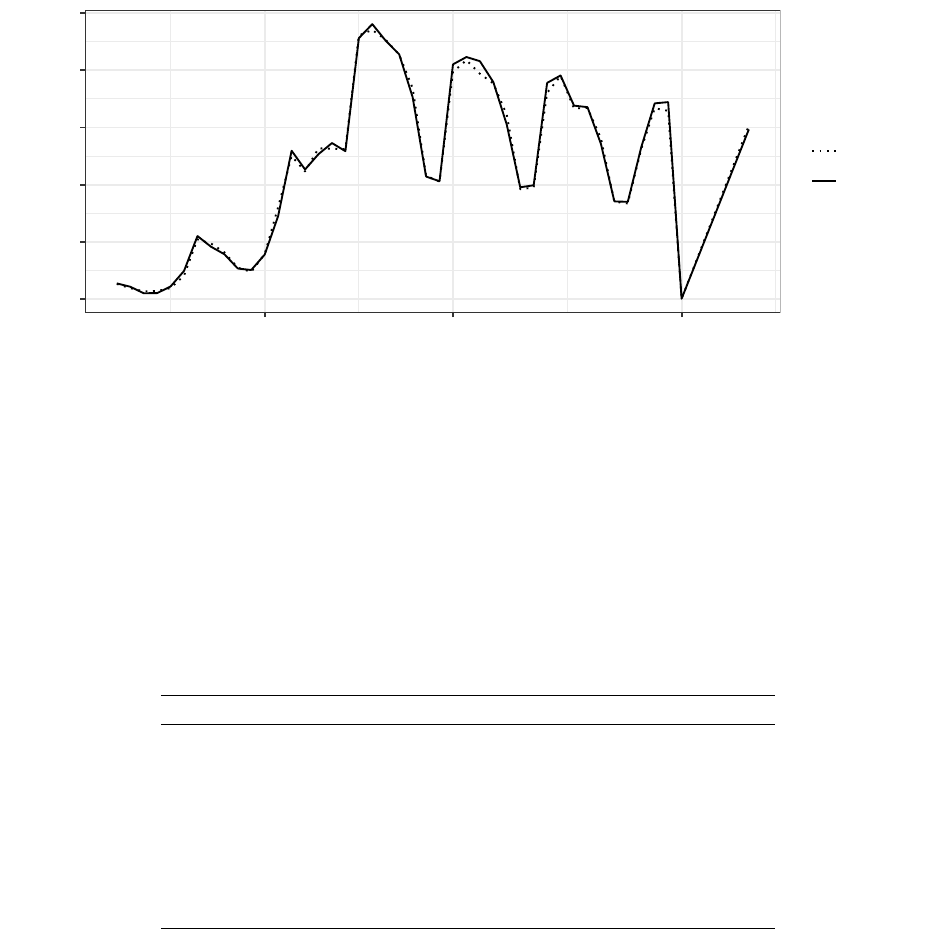
Figure 1: Daily allocations of jobseekers into experimental cells
0
500
1000
1500
2000
2500
May 01
May 15
Jun 01
Daily Allocations into Experiment
Control
Treatment
Notes: This plot shows the daily allocations into the treatment and control cells for the experimental sample
of 480,948 new jobseekers to the platform.
A Appendix
A.1 Summary statistics and descriptives
Table A1: Summary statistics of jobs worked in the control group
Mean Std Deviation
Length of job in days 59 (114)
Fraction of jobs that are hourly 0.34 (0.47)
Total hours worked 201 (482)
Earnings from hourly jobs ($) 2,524 (2,524)
Earnings from fixed-price jobs ($) 386 (386)
Min hourly rate ($) 17.04 (18.42)
Max hourly rate ($) 17.22 (19)
Notes: This table reports summary statistics for jobs worked by workers in the control group of the experiment.
The experimental sample is of all new jobseekers who registered and were approved for the platform between
June 8th and July 14th, 2021 and had non-empty resumes. The sample of jobs include any job where the
worker was hired between June 08,2021 and August 14, 2021, with N = 4,521.
38
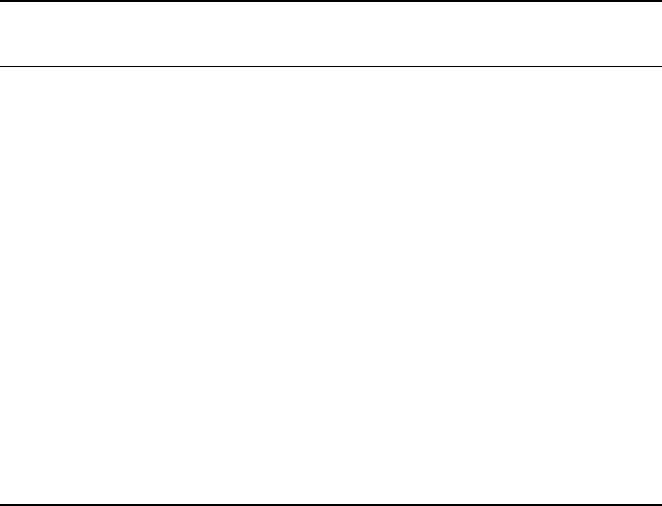
Table A2: Summary statistics on error counts and rates in the control group
Total Errors Error Rate
All Error Types 4.390 (10.257) 0.080 (0.252)
Capitalization Errors 0.140 (0.543) 0.004 (0.029)
Possible Typo 2.312 (8.768) 0.041 (0.106)
Grammar Errors 0.219 (0.589) 0.004 (0.014)
Punctuation Errors 0.425 (1.629) 0.008 (0.213)
Typographic Errors 0.821 (2.985) 0.016 (0.051)
Style Errors 0.317 (0.890) 0.004 (0.011)
Miscellaneous Errors 0.103 (0.391) 0.002 (0.009)
Redundant Phrases 0.025 (0.162) 0.000 (0.003)
Nonstandard Phrases 0.002 (0.050) 0.000 (0.001)
Commonly Confused Words 0.010 (0.117) 0.000 (0.002)
Collocations 0.012 (0.121) 0.000 (0.003)
Semantic Errors 0.003 (0.061) 0.000 (0.001)
Notes: This table reports means and standard errors of the writing errors in the resumes of the control group.
The first column displays the average total error count and the second column displays the average error rate
(total errors normalized by word count). Writing errors are defined by LanguageToolR. The sample is made up
of all jobseekers in the control group of the experimental sample who submitted non-empty resumes and were
approved by the platform.
39
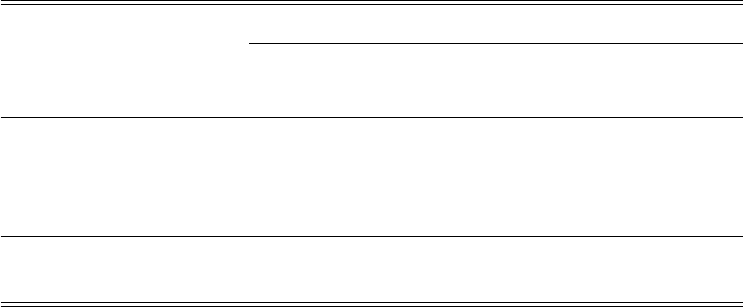
Table A3: Effects of writing assistance on profile submission and platform approval
Dependent variable:
Profile submitted x 100 Approved x 100
(1) (2) (3)
Algo Writing Treatment 0.106 0.199 0.186
(0.144) (0.133) (0.142)
Constant 45.532
∗∗∗
89.057
∗∗∗
40.550
∗∗∗
(0.102) (0.094) (0.100)
Observations 480,948 219,242 480,948
R
2
0.00000 0.00001 0.00000
Notes: This table analyzes the effect of the treatment on whether or not a jobseeker’s profile was submitted
and approved. In Column (1) the outcome is 100 times a binary indicator for whether or not the jobseeker
completed platform registration and submitted their resume, on the full experimental sample. In Column
(2) the outcome is 100 times a binary indicator for whether or not the platform approved the resume, on the
sample of only those jobseekers who submitted their resumes. In Column (3) the outcome is 100 times a binary
indicator for whether or not the platform approved the resume, on the full experimental sample. Significance
indicators: p ≤ 0.10 : ∗, p ≤ 0.05 : ∗∗ and p ≤ .01 : ∗ ∗ ∗.
40
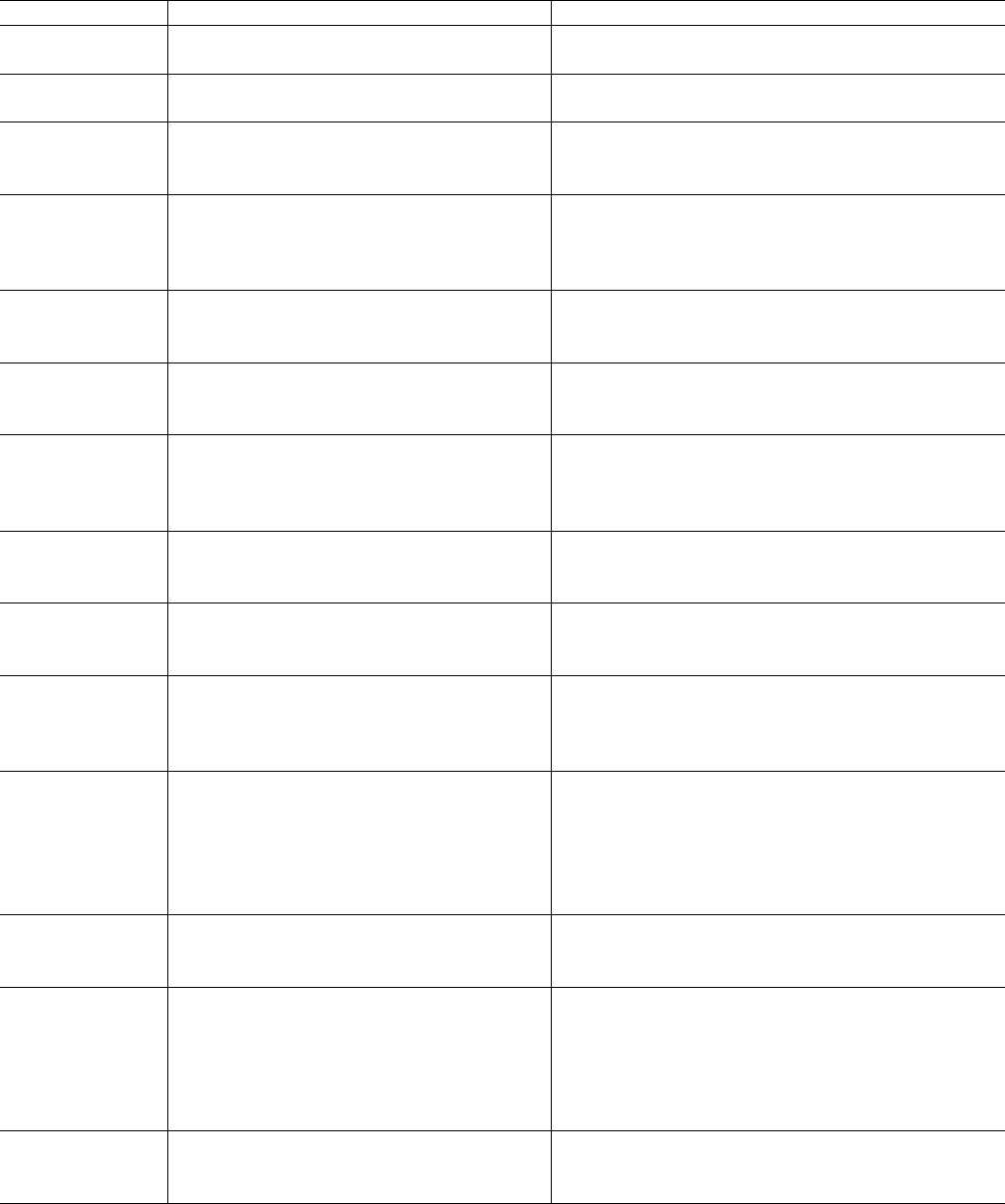
Table A4: Description of Error Rule Categories with Examples
Category Description Examples
American En-
glish Phrases
Sentence favors the American English
spelling of words.
apologize, catalog, civilization, defense
British English,
Oxford Spelling
Sentence favors the British English
spelling of words.
apologise, catalogue, civilisation, defence
Capitalization Rules about detecting uppercase words
where lowercase is required and vice
versa.
This house is old. it was built in 1950.
I really like Harry potter.
Collocations A collocation is made up of two or more
words that are commonly used together in
English. This refers to an error in this
type of phrase.
Undoubtedly, this is the result of an extremely dy-
namic development of Lublin in the recent years.
I will take it in to account.
It’s batter to be save then sorry.
Commonly Con-
fused Words
Words that are easily confused, like ’there’
and ’their’ in English.
I have my won bed.
Their elicit behavior got the students kicked out of
school.It’s the worse possible outcome.
Grammar Violations related to system of rules that
allow us to structure sentences.
Tom make his life worse.
A study like this one rely on historical and present
data.This is best way of dealing with errors.
Miscellaneous Miscellaneous rules that do not fit else-
where.
This is best way of dealing with errors.
The train arrived a hour ago.
It’s nice, but it doesn’t work. (inconsistent apostro-
phes)
Nonstandard
Phrases
I never have been to London.
List the names in an alphabetical order.
Why would a man all of the sudden send flowers?
Possible Typo Spelling issues. It’a extremely helpful when it comes to homework.
We haven’t earned anything.This is not a HIPPA
violation.
Punctuation Error in the marks, such as period,
comma, and parentheses, used in writing
to separate sentences and their elements
and to clarify meaning.
"I’m over here, she said.
Huh I thought it was done already.
The U.S.A is one of the largest countries.
Redundant
Phrases
Redundant phrases contain words that
say the same thing twice. When one of the
words is removed, the sentence still makes
sense. Sometimes the sentence has to be
slightly restructured, but the message re-
mains the same.
We have more than 100+ customers.
He did it in a terrible way.
The money is sufficient enough to buy the sweater.
Semantics Logic, content, and consistency problems. It allows us to both grow, focus, and flourish.
On October 7, 2025 , we visited the client.This was
my 11nd try.
Style General style issues not covered by other
categories, like overly verbose wording.
Moreover, the street is almost entirely residential.
Moreover, it was named after a poet.
Doing it this way is more easy than the previous
method.
I’m not very experienced too.
Anyways, I don’t like it.
Typography Problems like incorrectly used dash or
quote characters.
This is a sentence with two consecutive spaces.
I have 3dogs.The price rose by $12,50.
I’ll buy a new T—shirt.
41
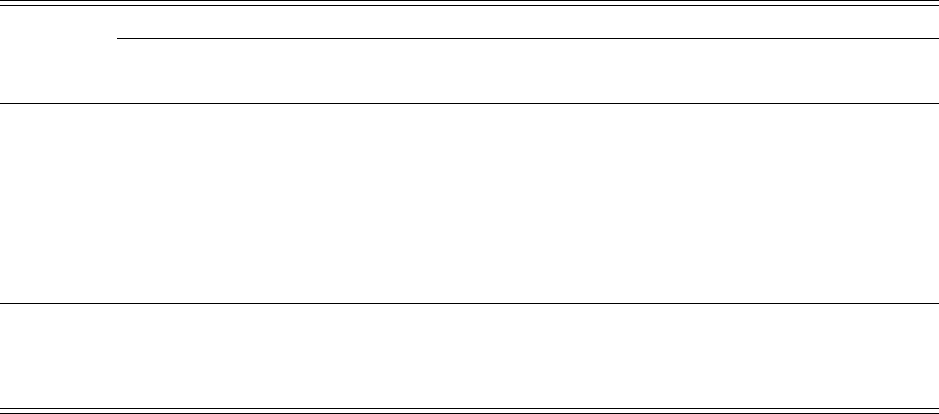
Table A5: Hiring outcomes predicted based on language errors in observational data
Dependent variable:
Hired Number of Contracts Hired Number of Contracts
(1) (2) (3) (4) (5) (6) (7) (8)
Total errors −0.0002
∗∗
−0.0003
∗∗
−0.0001 −0.0002
(0.0001) (0.0001) (0.0001) (0.0001)
Num words 0.0002
∗∗∗
0.0004
∗∗∗
0.0001
∗∗∗
0.0003
∗∗∗
(0.00001) (0.00002) (0.00001) (0.00002)
Error rate −0.011
∗∗∗
−0.017
∗∗∗
−0.007
∗∗∗
−0.010
∗∗
(0.003) (0.005) (0.003) (0.005)
Constant 0.017
∗∗∗
0.033
∗∗∗
0.020
∗∗∗
0.049
∗∗∗
0.014
∗∗∗
0.024
∗∗∗
0.014
∗∗∗
0.034
∗∗∗
(0.001) (0.001) (0.002) (0.001) (0.001) (0.001) (0.002) (0.001)
Normalized X X X X
Controls X X X X
Observations 65,114 65,114 65,114 65,114 65,114 65,114 65,114 65,114
R
2
0.007 0.0002 0.007 0.0002 0.142 0.139 0.108 0.105
Notes: This table analyzes correlation between all writing errors on jobseekers’ resumes and their hiring
outcomes. The first independent variable is the total number of writing errors on a jobseekers’ resume. The
second independent variable is the total number of errors divided by the length of their resume, in number
of words. Hired is defined as 1 if the jobseeker was ever hired in their first month after registering for the
platform, and 0 if else. Number of Contracts is defined as the number of unique jobs they begin working in
that time. Columns (5) through (8) include controls for profile hourly rate and job category. Writing errors
are defined by LanguageToolR. The sample is made up of all jobseekers who registered for the platform in the
week before the experiment who submitted non-empty resumes.
Significance indicators: p ≤ 0.10 : ∗, p ≤ 0.05 : ∗∗ and p ≤ .01 : ∗ ∗ ∗.
42

Table A6: Hiring outcomes predicted based on language errors in the observational data
Dependent variable:
Hired Number of Contracts Hired Number of Contracts
(1) (2) (3) (4)
Number of words 0.0002
∗∗∗
0.0004
∗∗∗
0.0001
∗∗∗
0.0003
∗∗∗
(0.00001) (0.00002) (0.00001) (0.00002)
Capitalization Error −0.002
∗
−0.006
∗∗∗
−0.001 −0.004
∗
(0.001) (0.002) (0.001) (0.002)
Possible Typo −0.00001 −0.00000 0.00003 0.0001
(0.0001) (0.0002) (0.0001) (0.0002)
Grammar Error −0.007
∗∗∗
−0.012
∗∗∗
−0.004
∗∗∗
−0.008
∗∗∗
(0.001) (0.002) (0.001) (0.002)
Punctuation Error 0.001
∗∗∗
0.002
∗
0.001
∗
0.0004
(0.0004) (0.001) (0.0004) (0.001)
Typography Error −0.001
∗∗∗
−0.001
∗∗
−0.001
∗∗∗
−0.001
∗
(0.0002) (0.0005) (0.0002) (0.0004)
Style Error 0.003
∗∗∗
0.006
∗∗∗
0.003
∗∗∗
0.006
∗∗∗
(0.001) (0.002) (0.001) (0.001)
Miscellaneous Error −0.007
∗∗∗
−0.011
∗∗∗
−0.003
∗∗
−0.005
(0.002) (0.003) (0.002) (0.003)
Redundant Phrases −0.003 −0.009 −0.001 −0.006
(0.004) (0.008) (0.004) (0.008)
Nonstandard Phrases −0.001 0.009 −0.003 0.005
(0.014) (0.026) (0.013) (0.025)
Commonly Confused Words −0.008 −0.021
∗
−0.003 −0.015
(0.006) (0.011) (0.006) (0.011)
Collocations −0.003 −0.013 −0.003 −0.013
(0.006) (0.011) (0.005) (0.010)
Semantic Error 0.004 0.035 0.002 0.031
(0.011) (0.021) (0.010) (0.020)
Constant 0.018
∗∗∗
0.022
∗∗∗
0.015
∗∗∗
0.015
∗∗∗
(0.001) (0.002) (0.001) (0.002)
Controls X X
Observations 65,114 65,114 65,114 65,114
R
2
0.009 0.008 0.142 0.109
Notes: This table analyzes correlation between various writing errors on jobseekers’ resumes and their hiring
outcomes. Hired is defined as 1 if the jobseeker was ever hired in their first month after registering for the
platform, and 0 if else. Number of Contracts is defined as the number of unique jobs they begin working in
that time. Columns (3) and (4) include controls for profile hourly rate and job category. Writing errors are
defined by LanguageToolR. The sample is made up of all jobseekers who registered for the platform in the
week before the experiment who submitted non-empty resumes.
Significance indicators: p ≤ 0.10 : ∗, p ≤ 0.05 : ∗∗ and p ≤ .01 : ∗ ∗ ∗.
43

Table A7: Effects of writing assistance on length of resume
Dependent variable:
Number of words in resume
Algo Writing Treatment 0.127
(0.314)
Constant 70.541
∗∗∗
(0.223)
Observations 194,700
R
2
0.00000
Notes: This table analyzes the effect of the treatment on the number of words
in a jobseeker’s resume. The sample is made up of all jobseekers in the exper-
imental sample who submitted non-empty profiles and were approved by the
platform. Significance indicators: p ≤ 0.10 : ∗, p ≤ 0.05 : ∗∗ and p ≤ .01 : ∗ ∗ ∗.
44

Table A8: Effect of Treatment on Writing Errors, Page 1
Dependent variable:
Capitalization Possible Typo Grammar Punctuation Typography Style
(1) (2) (3) (4) (5) (6)
Algo Writing Treatment −0.0005
∗∗∗
−0.002
∗∗∗
−0.0005
∗∗∗
−0.0004 −0.002
∗∗∗
0.0003
∗∗∗
(0.0001) (0.0005) (0.0001) (0.0004) (0.0003) (0.0001)
Constant 0.003
∗∗∗
0.041
∗∗∗
0.004
∗∗∗
0.010
∗∗∗
0.015
∗∗∗
0.004
∗∗∗
(0.00005) (0.0003) (0.00004) (0.0003) (0.0002) (0.00004)
Observations 194,700 194,700 194,700 194,700 194,700 194,700
R
2
0.0003 0.0001 0.0004 0.00000 0.0004 0.0001
Notes: This table analyzes the effect of the treatment on all types of writing errors, normalized by resume
length. Writing errors are defined by LanguageToolR, and divided by the number of words in a jobseekers’
resume to calculate their error rate. The sample is made up of all jobseekers in the experimental sample who
completed the platform registration page and submitted non-empty resume. Significance indicators: p ≤ 0.10 :
∗, p ≤ 0.05 : ∗∗ and p ≤ .01 : ∗ ∗ ∗.
45

Table A9: Effect of Treatment on Writing Errors, Page 2
Dependent variable:
Redundant Phrases Nonstandard Phrases Commonly Confused Words Collocations Semantics get(vars[12])
(1) (2) (3) (4) (5) (6)
Algo Writing Treatment −0.0004
∗∗∗
−0.00003
∗
−0.00001 −0.00005
∗∗∗
−0.0001
∗∗∗
0.00001
(0.00003) (0.00001) (0.00000) (0.00001) (0.00001) (0.00001)
Constant 0.002
∗∗∗
0.0004
∗∗∗
0.00003
∗∗∗
0.0001
∗∗∗
0.0003
∗∗∗
0.0001
∗∗∗
(0.00002) (0.00001) (0.00000) (0.00001) (0.00001) (0.00000)
Observations 194,700 194,700 194,700 194,700 194,700 194,700
R
2
0.001 0.00002 0.00001 0.0001 0.0001 0.00000
Notes: This table analyzes the effect of the treatment on all types of writing errors, normalized by resume
length. Writing errors are defined by LanguageToolR, and divided by the number of words in a jobseekers’
resume to calculate their error rate. The sample is made up of all jobseekers in the experimental sample
who completed the platform registration page and submitted non-empty resume. Significance: p ≤ 0.10 : †,
p ≤ 0.05 : ∗, p ≤ 0.01 : ∗∗ and p ≤ .001 : ∗ ∗ ∗.
46

Table A10: Effect of algorithmic writing assistance on hiring outcomes, controlling for platform approval
Dependent variable:
Num Invitations Num Shortlists Num Interviews Hired x 100 Num Contracts
(1) (2) (3) (4) (5)
Algo Writing Treatment 0.0004 0.001 0.002 0.100
∗∗∗
0.001
∗∗
(0.001) (0.001) (0.002) (0.032) (0.001)
Approved by Platform 0.142
∗∗∗
0.040
∗∗∗
0.179
∗∗∗
3.204
∗∗∗
0.049
∗∗∗
(0.001) (0.001) (0.002) (0.033) (0.001)
Constant 0.00001 −0.0003 −0.001 −0.050
∗
−0.001
(0.001) (0.0005) (0.001) (0.027) (0.001)
Observations 480,948 480,948 480,948 480,948 480,948
R
2
0.023 0.010 0.024 0.019 0.011
Notes: This analysis looks at the effect of treatment on hiring outcomes on jobseekers in the experimental
sample. The Column (1) outcome Invitations is the number of times they were recruited to a job over their
first month. Column (2) is the number of times their application was shortlisted over that month. Column
(3) is the number of interviews they gave over that month. Column (4) defines Hired x 100 as one hundred
times the probability the jobseeker was hired over that month. Column (5) defines Number of Contracts as
the number of unique jobs they work over the month after they register for the platform.
The sample used in this analysis is the entire experimental sample. Significance indicators: p ≤ 0.10 : ∗,
p ≤ 0.05 : ∗∗ and p ≤ .01 : ∗ ∗ ∗.
47

Table A11: Effect of algorithmic writing assistance on hiring outcomes, unconditional on platform approval
Dependent variable:
Num Invitations Num Shortlists Num Interviews Hired x 100 Num Contracts
(1) (2) (3) (4) (5)
Algo Writing Treatment 0.001 0.001 0.002 0.106
∗∗∗
0.002
∗∗
(0.001) (0.001) (0.002) (0.033) (0.001)
Constant 0.058
∗∗∗
0.016
∗∗∗
0.072
∗∗∗
1.249
∗∗∗
0.019
∗∗∗
(0.001) (0.0004) (0.001) (0.023) (0.0005)
Observations 480,948 480,948 480,948 480,948 480,948
R
2
0.00000 0.00001 0.00000 0.00002 0.00001
Notes: This analysis looks at the effect of treatment on hiring outcomes on jobseekers in the experimental
sample. The Column (1) outcome Invitations is the number of times they were recruited to a job over their
first month. Column (2) is the number of times their application was shortlisted over that month. Column
(3) is the number of interviews they gave over that month. Column (4) defines Hired x 100 as one hundred
times the probability the jobseeker was hired over that month. Column (5) defines Number of Contracts as the
number of unique jobs they work over the month after they register for the platform. The sample used in this
analysis is the entire experimental sample. Significance indicators: p ≤ 0.10 : ∗, p ≤ 0.05 : ∗∗ and p ≤ .01 : ∗∗∗.
48
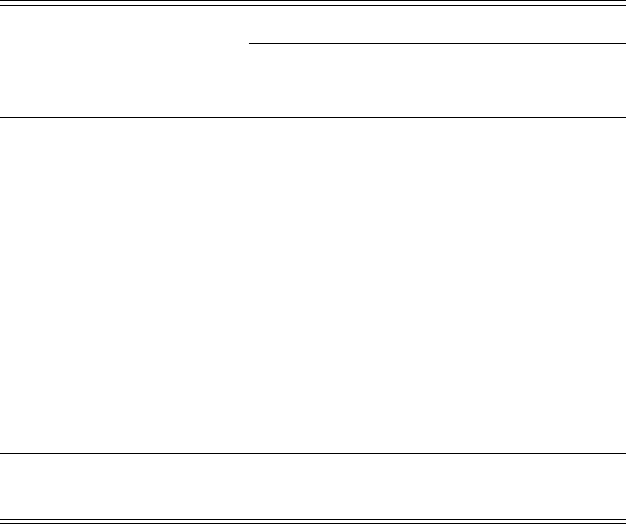
Table A12: Effects of writing assistance on error rate, by sub-groups
Dependent variable:
Total Error rate x 100
(1) (2) (3)
Algo Writing Treatment −0.512
∗∗∗
−0.622
∗∗∗
−0.594
∗∗∗
(0.070) (0.077) (0.075)
Anglophone Country −4.535
∗∗∗
(0.127)
Trt ×Anglo 0.562
∗∗∗
(0.180)
US −4.469
∗∗∗
(0.141)
Trt × US 0.516
∗∗∗
(0.200)
Constant 7.680
∗∗∗
8.513
∗∗∗
8.321
∗∗∗
(0.050) (0.055) (0.053)
Observations 194,700 194,700 194,700
R
2
0.0003 0.012 0.009
Notes: In Column (1) we show the overall effect of the treatment to one minus the number of errors on a
jobseekers’ resume divided by the number of words. In Column (2) we interact the treatment with a dummy
variable for if the jobseeker is from the US, UK, Canada, or Australia. In Column (3) we interact the treatment
with a dummy for if the jobseeker is in the US. The experimental sample is of all new jobseekers who regis-
tered and were approved by the platform between June 8th and July 14th, 2021 and had non-empty resumes.
Significance indicators: p ≤ 0.10 : ∗, p ≤ 0.05 : ∗∗ and p ≤ .01 : ∗ ∗ ∗.
49
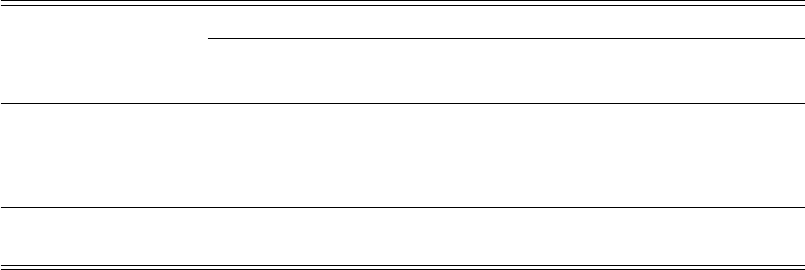
Table A13: Effect of algorithmic writing assistance on writers
Dependent variable:
Error Rate X 100 Hires X 100 Private rating Positive text review
(1) (2) (3) (4)
Algo Writing Treatment −0.580
∗∗∗
0.190 −0.053 −0.064
(0.139) (0.184) (0.214) (0.060)
Constant 7.086
∗∗∗
2.855
∗∗∗
8.456
∗∗∗
0.874
∗∗∗
(0.098) (0.130) (0.153) (0.046)
Observations 33,907 33,907 672 149
R
2
0.001 0.00003 0.0001 0.008
Notes: This analysis looks at the effect of treatment on contract outcomes for jobseekers in the experimental
sample whose primary job category is listed as Writing. In Column (1) the outcome is 100 times the error rate
based on any error type in their resume. In Column (2) the outcome is 100 times whether or not the jobseeker
ever is hired over their first month on the platform. In Column (3) the outcome is the mean private rating of
jobseeker for any jobs they work in their first month on the platfrom. In Column (4) we take the text of the
reviews left by employers on each job and use sentiment analysis (model: distilbert-base-uncased-finetuned-
sst-2-english) to impute whether the review is positive, neutral, or negative, labeled one if it is positive or
neutral. The outcome is the mean of these ratings over all contracts in the sample. The experimental sample
is of all new jobseekers who registered and were approved for the platform between June 8th and July 14th,
2021 and had non-empty resumes, for all jobs they worked within 28 days of registering for the platform.
Significance indicators: p ≤ 0.10 : ∗, p ≤ 0.05 : ∗∗ and p ≤ .01 : ∗ ∗ ∗.
50

Table A14: Effects of writing assistance on hiring, by sub-groups
Dependent variable:
Hired x 100
(1) (2) (3)
Algo Writing Treatment 0.247
∗∗∗
0.223
∗∗
0.242
∗∗∗
(0.080) (0.088) (0.086)
Anglophone Country 2.508
∗∗∗
(0.146)
Trt ×Anglo 0.155
(0.207)
US 2.602
∗∗∗
(0.161)
Trt × US 0.072
(0.228)
Constant 3.093
∗∗∗
2.632
∗∗∗
2.719
∗∗∗
(0.057) (0.063) (0.061)
Observations 194,700 194,700 194,700
R
2
0.00005 0.003 0.003
Notes: This table analyzes the effect of the treatment on whether or not a jobseeker was ever hired on the
platform in the month after they joined, times 100. In Column (1) we show the overall effect of the treatment
to hiring. In Column (2) we interact the treatment with a dummy variable for if the jobseeker is from the US,
UK, Canada, or Australia. In Column (3) we interact the treatment with a dummy for if the jobseeker is in
the US. The experimental sample is of all new jobseekers who registered and were approved by the platform
between June 8th and July 14th, 2021 and had non-empty resumes. Significance indicators: p ≤ 0.10 : ∗,
p ≤ 0.05 : ∗∗ and p ≤ .01 : ∗ ∗ ∗.
51

A.2 Effect of the treatment on workers’ earnings
As further robustness to test whether workers in the treatment group underperformed to
expectation, we regress treatment on various measures of worker’s earnings in their first
28 days on the platform. In Appendix Table A15 Column (2) the outcome is workers’ log
of 1 plus hourly earnings. As with total hours, there are a lot of zeros, but among workers
who have any hourly earnings, the average in the control group is $1,529 in their first
month. In Column (3) the outcome is the log of 1 plus the sum of workers earnings from
both hourly and fixed price jobs, unconditional on ever being hired. Among workers who
have any earnings, the average in the control group is $2,957. Small positive effects on
hourly earnings are mechanical due to the increase in hourly wages, and there does not
seem to be any additional earnings effect to fixed price jobs. Because of the large number of
jobseekers who have zero earnings, we report results from specifications which deal better
with overdispersion in Appendix Figure 2. The treatment effect estimates are all small and
positive, but point estimates are sensitive to specification.
Table A15: Effects of algorithmic writing assistance on workers’ earnings
Dependent variable:
Log hourly earnings Log total earnings
(1) (2)
Algo Writing Treatment 0.010
∗∗∗
0.010
∗∗∗
(0.003) (0.004)
Constant 0.061
∗∗∗
0.134
∗∗∗
(0.002) (0.003)
Observations 194,700 194,700
R
2
0.0001 0.00003
Notes: This table analyzes the effect of the treatment on measures of workers’ earnings. In Column (1) the
outcome is the log hourly earnings a worker is paid over this time period. In Column (2) the outcome is the
log total earnings a worker is paid over this time period. The experimental sample is of all new jobseekers
who registered and were approved by the platform between June 8th and July 14th, 2021 and had non-empty
resumes. Significance indicators: p ≤ 0.10 : ∗, p ≤ 0.05 : ∗∗ and p ≤ .01 : ∗ ∗ ∗.
52
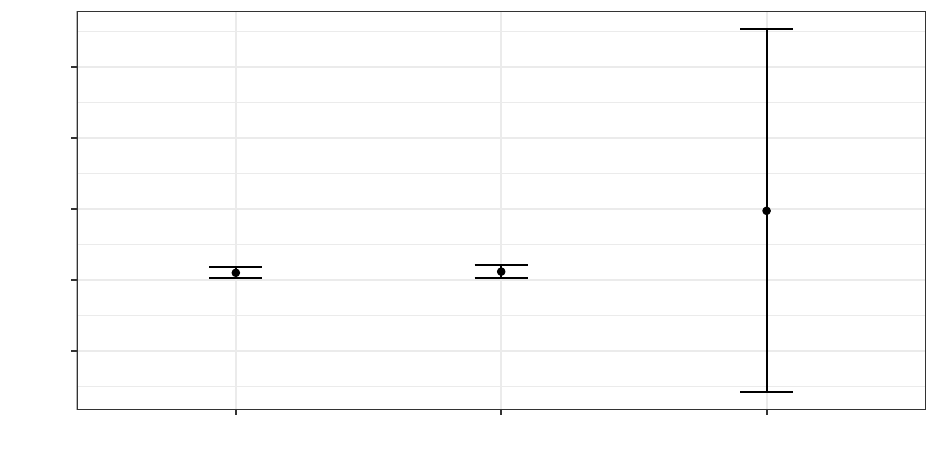
Figure 2: Robustness tests for total earnings treatment effect
−0.1
0.0
0.1
0.2
0.3
Log(1+ earnings) Inverse Hyperbolic Sine Transform Quasi−Poisson
Model
Treatment effect point estimate
Notes: This plot shows the effect of the treatment on the total earnings on all contracts from the workers first
month on the platform. We report results from specifications meant to deal with the fact that most of the
observations are zeros. The first specification is an OLS regression where the outcome is log(1+ earnings), the
second specification is OLS where the earnings variable has had an Inverse Hyperbolic Sine transformation.
The third is a quasi-poisson generalized linear model. The experimental sample is of all new jobseekers who
registered and were approved for the platform between June 8th and July 14th, 2021, and had non-empty
resumes, with N = 194,700.
53

Table A16: Effect of algorithmic writing assistance on workers’ public ratings
Dependent variable:
Communication Skills Quality Cooperation Deadlines Recieved public rating
(1) (2) (3) (4) (5) (6)
Algo Writing Treatment −0.008 −0.005 0.004 −0.008 −0.009 0.002
(0.021) (0.021) (0.023) (0.020) (0.022) (0.012)
Constant 4.811
∗∗∗
4.801
∗∗∗
4.768
∗∗∗
4.840
∗∗∗
4.803
∗∗∗
0.534
∗∗∗
(0.015) (0.015) (0.016) (0.015) (0.016) (0.009)
Observations 3,745 3,745 3,745 3,745 3,745 6,263
R
2
0.00004 0.00002 0.00001 0.00004 0.00004 0.00001
Notes: This analysis looks at the effect of treatment on the average public ratings of contracts for jobseekers in
the experimental sample. All ratings are on a scale of 1 to 5 and averaged at the worker level. In Column (1)
the outcome is the rating the employer gives to the workers’ communication ability. In Column (2) the outcome
is the rating the employer gives to the workers’ skills. In Column (3) the outcome is the rating the employer
gives to the overall quality of work completed. In Column (4) the outcome is the rating the employer gives to
the workers’ cooperation. In Column (5) the outcome is the rating the employer gives to the workers’ ability
to make deadlines. In Column (6) the outcome is the percentage of jobs worked where the worker was left any
public rating by their employer. The experimental sample is of all new jobseekers who registered and were
approved for the platform between June 8th and July 14th, 2021 and had non-empty resumes. Significance
indicators: p ≤ 0.10 : ∗, p ≤ 0.05 : ∗∗ and p ≤ .01 : ∗ ∗ ∗.
54

Table A17: Effects of writing assistance on private ratings and reviews
Dependent variable:
Private rating Positive text review
(1) (2) (3) (4) (5) (6)
Algo Writing Treatment −0.076 −0.132 −0.126 0.016 0.015 0.014
(0.082) (0.098) (0.094) (0.019) (0.022) (0.021)
Anglophone Country 0.481
∗∗∗
0.014
(0.126) (0.033)
Trt ×Anglo 0.213 0.003
(0.177) (0.044)
US 0.516
∗∗∗
−0.002
(0.135) (0.036)
Trt × US 0.244 0.009
(0.190) (0.049)
Constant 8.631
∗∗∗
8.480
∗∗∗
8.502
∗∗∗
0.858
∗∗∗
0.854
∗∗∗
0.858
∗∗∗
(0.059) (0.071) (0.068) (0.014) (0.016) (0.016)
Observations 4,318 4,318 4,318 1,189 1,189 1,189
R
2
0.0002 0.011 0.011 0.001 0.001 0.001
Notes: In this table we report the effect of the treatment to two measures of worker ratings. In Columns
(1) through (3) the outcome is jobseekers average private ratings. In Columns (4) through (6) the outcome is
the average percent of jobseekers reviews flagged as having a positive or neutral sentiment. In Column (2)
and (5) we interact the treatment with a dummy variable for if the jobseeker is from the US, UK, Canada, or
Australia. In Column (3) and we interact the treatment with a dummy for if the jobseeker is in the US. The
experimental sample is of all new jobseekers who registered and were approved by the platform between June
8th and July 14th, 2021 and had non-empty resumes. Significance indicators: p ≤ 0.10 : ∗, p ≤ 0.05 : ∗∗ and
p ≤ .01 : ∗ ∗ ∗.
55
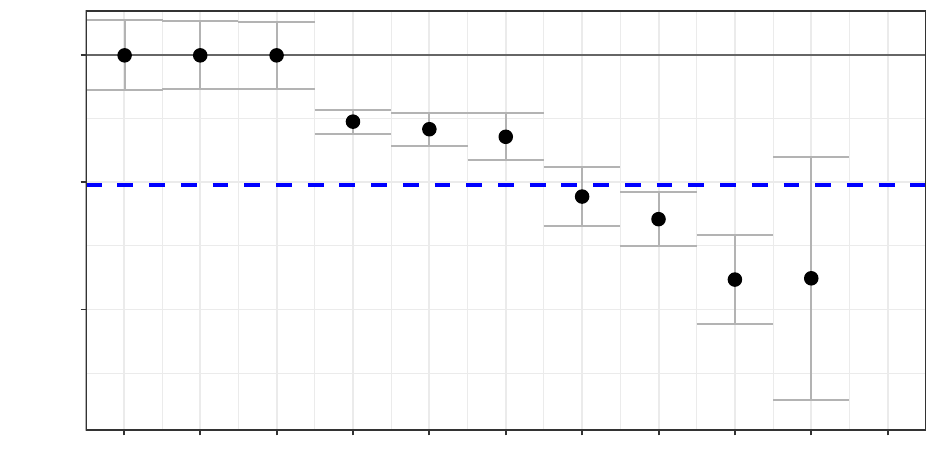
Figure 3: Effect of treatment on the error rate, by deciles
OLS Estimate
−1.0
−0.5
0.0
0 1 2 3 4 5 6 7 8 9 10
Treatment Effect in (%)
Notes: This plot shows the effect of the treatment on the number of errors divided by the number of words
in jobseekers’ resumes, by deciles. Jobseekers in the lowest deciles have the least writing errors relative to
their length, and jobseekers at the highest deciles have the most errors. The experimental sample is of all new
jobseekers who registered and were approved for the platform between June 8th and July 14th, 2021, and had
non-empty resumes, with N = 194,700.
56
